Forums
- Forums
- Axis And Allies Forum
- General Discussion
- Aviation News
Aviation News
Post a reply
- Go to Previous topic
- Go to Next topic
- Go to Welcome
- Go to Introduce Yourself
- Go to General Discussion
- Go to Screenshots, Images and Videos
- Go to Off topic
- Go to Works in Progress
- Go to Skinning Tips / Tutorials
- Go to Skin Requests
- Go to IJAAF Library
- Go to Luftwaffe Library
- Go to RAF Library
- Go to USAAF / USN Library
- Go to Misc Library
- Go to The Ops Room
- Go to Made in Germany
- Go to Campaigns and Missions
- Go to Works in Progress
- Go to Juri's Air-Raid Shelter
- Go to Campaigns and Missions
- Go to Works in Progress
- Go to Skinpacks
- Go to External Projects Discussion
- Go to Books & Resources
-
 Main AdminPHILIPPINE SEA (Sept. 12, 2023) Sailors aboard the Arleigh Burke-class guided-missile destroyer USS Dewey (DDG 105) conduct an in-flight refueling with an MH-60R Sea Hawk helicopter from Helicopter Maritime Strike Squadron (HSM) 37 while operating in the Philippine Sea, Sept. 12, 2023. Dewey is assigned to Commander, Task Force 71/Destroyer Squadron (DESRON) 15, the Navy’s largest forward-deployed DESRON and the U.S. 7th Fleet’s principal surface force. (U.S. Navy photo by Mass Communication Specialist 1st Class Greg Johnson)
Main AdminPHILIPPINE SEA (Sept. 12, 2023) Sailors aboard the Arleigh Burke-class guided-missile destroyer USS Dewey (DDG 105) conduct an in-flight refueling with an MH-60R Sea Hawk helicopter from Helicopter Maritime Strike Squadron (HSM) 37 while operating in the Philippine Sea, Sept. 12, 2023. Dewey is assigned to Commander, Task Force 71/Destroyer Squadron (DESRON) 15, the Navy’s largest forward-deployed DESRON and the U.S. 7th Fleet’s principal surface force. (U.S. Navy photo by Mass Communication Specialist 1st Class Greg Johnson)_37_while_operating_in_the_Philippine_Sea_Sept._12_2023..jpg?width=1920&height=1080&fit=bounds)
Airmen from the 51st Fighter Wing prepare to conduct a post-flight check after an A-10 Thunderbolt II lands in support of Exercise Iron Spear at Misawa Air Base, Japan, Sept 8, 2023. During the training, members from the 35th Fighter Wing, 51st Fighter Wing, and Japan Ground Self-Defense Forces integrated together to simulate suppressing enemy air defense operations. (U.S. Air Force photo by Senior Airman Antwain Hanks)
A C-130J Super Hercules taxis at Dyess Air Force Base, Texas, Sept. 6, 2023. Six C-130Js returned with members from the 317th Airlift Wing from Kuwait and completed the first Air Force Force Generation movement within Air Mobility Command for the C-130J. AFFORGEN focuses on a 24-month cycle with 6-months per phase, which consist of four different stages: prepare, ready, available to commit and rest. (U.S. Air Force photo by Staff Sgt. Mercedes Bizzotto)
PALMDALE, Calif. – Sept. 12, 2023 – (PHOTO RELEASE) The U.S. Air Force announced today the B-21 Raider has commenced engine runs as part of its ground test program at Northrop Grumman’s Palmdale, California, facility. Engine testing is an essential milestone for the program as the world’s first sixth-generation aircraft continues on the path to flight test.
The B-21’s first flight will remain a data driven event that is monitored by Northrop Grumman and the United States Air Force.
Developed with the next generation of stealth technology, advanced networking capabilities and open systems architecture, the B-21 Raider will serve as the backbone of America’s bomber fleet.
Seville, 13 September 2023 – Airbus Defence and Space has officially handed over in fly-away condition the first of 56 C295 aircraft to the Indian Air Force (IAF) to begin replacing its ageing Avros-748 fleet.
The C295, in transport configuration and with an indigenous electronic warfare suite, will leave Airbus’ production site in Seville, Spain, for Delhi, India, in the next few days, piloted by a joint IAF-Airbus crew.
“It was only two years ago that we signed this contract with India, the largest order in the history of the C295,” said Jean-Brice Dumont, Airbus’ Head of Military Air Systems, in a delivery ceremony held in Seville in the presence of IAF Air Chief Marshal Vivek Ram Chaudhari.
“Today, we are enhancing the capabilities of the Indian Air Force and modernising its transport fleet by delivering the first aircraft on schedule. This is the beginning of an exciting and long-term journey with the Indian Air Force.”
The first 16 C295s of the 56 aircraft on order will be assembled at the San Pablo Sur site in Seville, Spain, with the second aircraft due to be delivered in May 2024 and the next 14 rolled out at a rate of one per month until August 2025.
First C295 ‘Make in India’ in 2026
To boost self-reliance in the defence-manufacturing sector in India, the remaining 40 C295s of the IAF order will be manufactured and assembled - in partnership with Tata Advanced Systems Limited (TASL) - at a Final Assembly Line (FAL) in Vadodara in western India.
The production of components of these aircraft has already started in the Main Constituent Assembly (MCA) facility in Hyderabad, southern India. These parts will be shipped to the Vadovara FAL, which is expected to be operational by November 2024.
The first ‘Make in India’ C295 will roll out of the Vadodara FAL in September 2026 in what will be a milestone for the Indian aerospace industry; the final aircraft expected to be delivered to the IAF by August 2031.
With 283 orders from 41 operators, the C295 is the undisputed leader in its segment and stands out for its versatility. It can carry up to 71 troops or 50 paratroopers, airdrop cargo, be used for medical evacuation and take off and land in short and unpaved runways.
The A321XLR programme has just kicked-off an international flight-test campaign, known as ‘Functional and Reliability Testing’ (FnR). Also referred to as ‘Route Proving’, this is part of Airbus’ certification activity contributing to EASA Type Certification expected for the new variant in 2024.
Overall, the main objective of the FnR is to demonstrate the A321XLR’s systems maturity well before entry into service, with a target of approximately 100 hours flying time over 10 days with no systems power-down. Specific sectors, comprising around 15 flights in total, are intentionally typical of what airlines might fly when the aircraft enters service. These have been defined to represent a mix of operator profiles, climatic conditions, flight durations and airport turnaround times.
For the first time since the A321XLR first flew in June 2022, there will be real airline cabin and flight crews gaining hands-on experience, alongside the Airbus test pilots and flight engineers as well as a representative group of around 30 passengers made up of volunteer Airbus and airline employees. Everyone on board, as well as myriad supporting teams on the ground in Toulouse and also at the destination airports, will contribute to a common objective to provide valuable feedback as the A321XLR spreads its wings for the first time, crossing oceans and visiting international airports. The aircraft which is flying these missions is ‘MSN 11080’ – one of three dedicated flight test prototypes, and the only one which is equipped with a full cabin interior.
“In the olden days ‘route proving’ was very much about showing customers the aircraft in action – that the aircraft they have bought can actually do what they want to do with it,” recalls Jim Fawcett, Airbus’ Lead Flight Test Engineer for the A321XLR’s FnR exercise.
“These days we carry on with this kind of demonstration, but we're also looking at showing the technical reliability and maturity and good functioning of the aircraft. So that's why we prefer to call it ‘functional and reliability testing’.”
Sep 13 2023
The UK Ministry of Defence (MOD) has awarded BAE Systems a contract to develop its Striker II Helmet Mounted Display (HMD) for the Royal Air Force (RAF) Typhoon fleet.
Developed at BAE Systems in Rochester, Kent, Striker II is one of the world’s most advanced fighter helmets which uses the latest technologies to integrate its all-digital night vision system and daylight readable colour display. Striker II displays data directly onto the pilot’s helmet visor, providing an augmented reality of the real world alongside mission critical information right before their eyes.
Under the new contract, BAE Systems engineers are maturing the helmet’s capability ahead of the start of initial production to support qualification and integration flight-testing at BAE Systems’ combat air site in Warton, Lancashire.
The contract, valued at £40m, will create and sustain more than 200 highly-skilled jobs at BAE Systems’ sites in Kent and Lancashire working directly on the Striker II programme. In total, the Typhoon programme sustains more than 20,800 jobs across the UK.
-
 Main AdminU.S. Marines with Marine Fighter Attack Squadron (VMFA) 542, perform preflight inspections on an F-35B Lightning II jet at Tyndall Air Force Base, Florida, Sept. 12, 2023. The Naval Weapons System Evaluation Program allowed VMFA-542 to safely conduct the loading and firing of live missiles at threat-realistic targets to test the squadron's ability, flexibility, and procedures while repositioned in unfamiliar locations. VMFA-542 is a subordinate unit of 2nd Marine Aircraft Wing, the aviation combat element for II Marine Expeditionary Force. (U.S. Marine Corps photos by Cpl. Christopher Hernandez)
Main AdminU.S. Marines with Marine Fighter Attack Squadron (VMFA) 542, perform preflight inspections on an F-35B Lightning II jet at Tyndall Air Force Base, Florida, Sept. 12, 2023. The Naval Weapons System Evaluation Program allowed VMFA-542 to safely conduct the loading and firing of live missiles at threat-realistic targets to test the squadron's ability, flexibility, and procedures while repositioned in unfamiliar locations. VMFA-542 is a subordinate unit of 2nd Marine Aircraft Wing, the aviation combat element for II Marine Expeditionary Force. (U.S. Marine Corps photos by Cpl. Christopher Hernandez)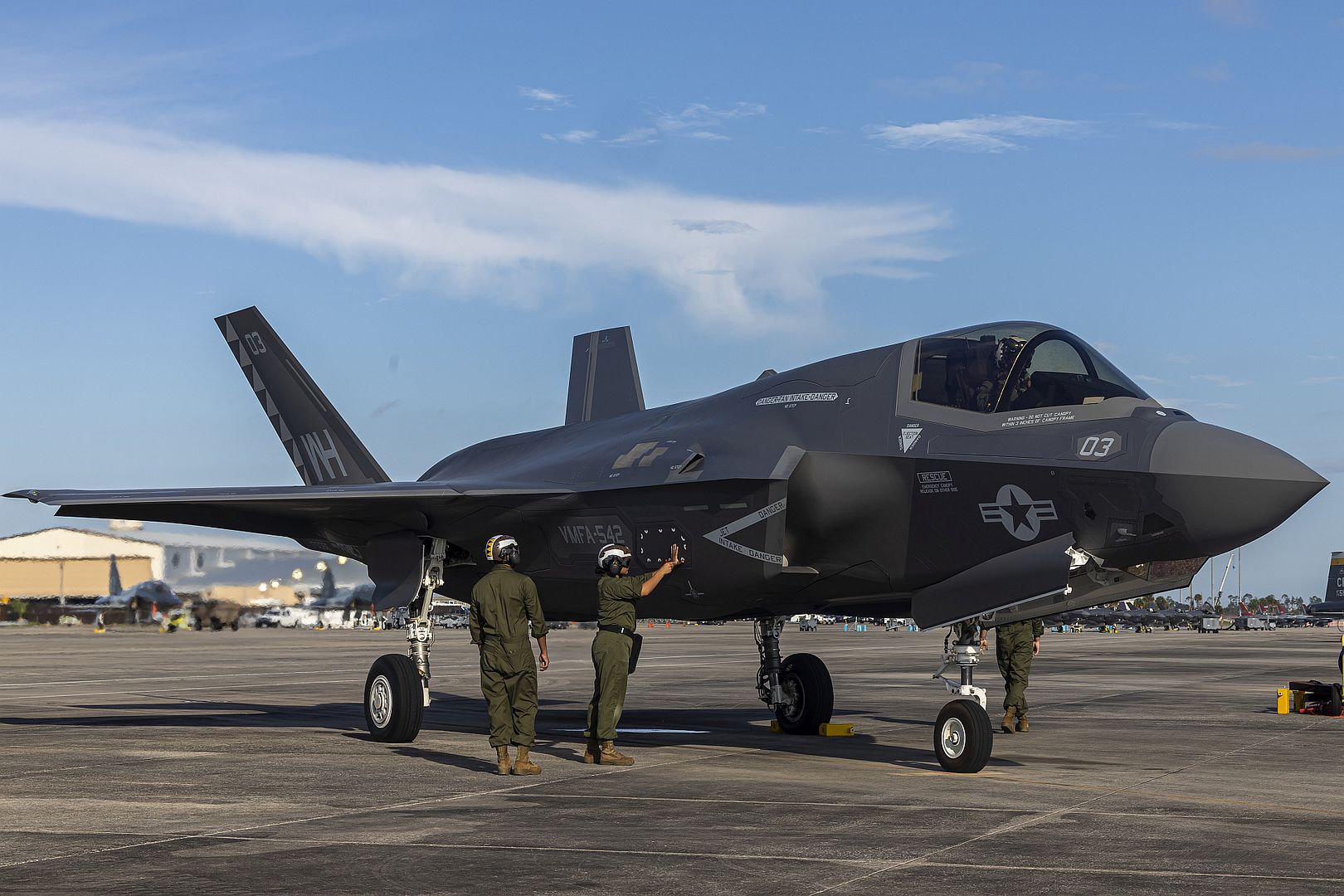

A U.S. Air Force pilot taxis an F-22 Raptor during William Tell 2023 at the Air Dominance Center located at the Savannah Air National Guard base in Savannah, Georgia, Sept. 12, 2023. After a 19-year hiatus, the Air Force’s historic William Tell competition is back to determine the top fighter integration team in the Air Force. (U.S. Air National Guard photo by Master Sgt. Morgan R. Whitehouse)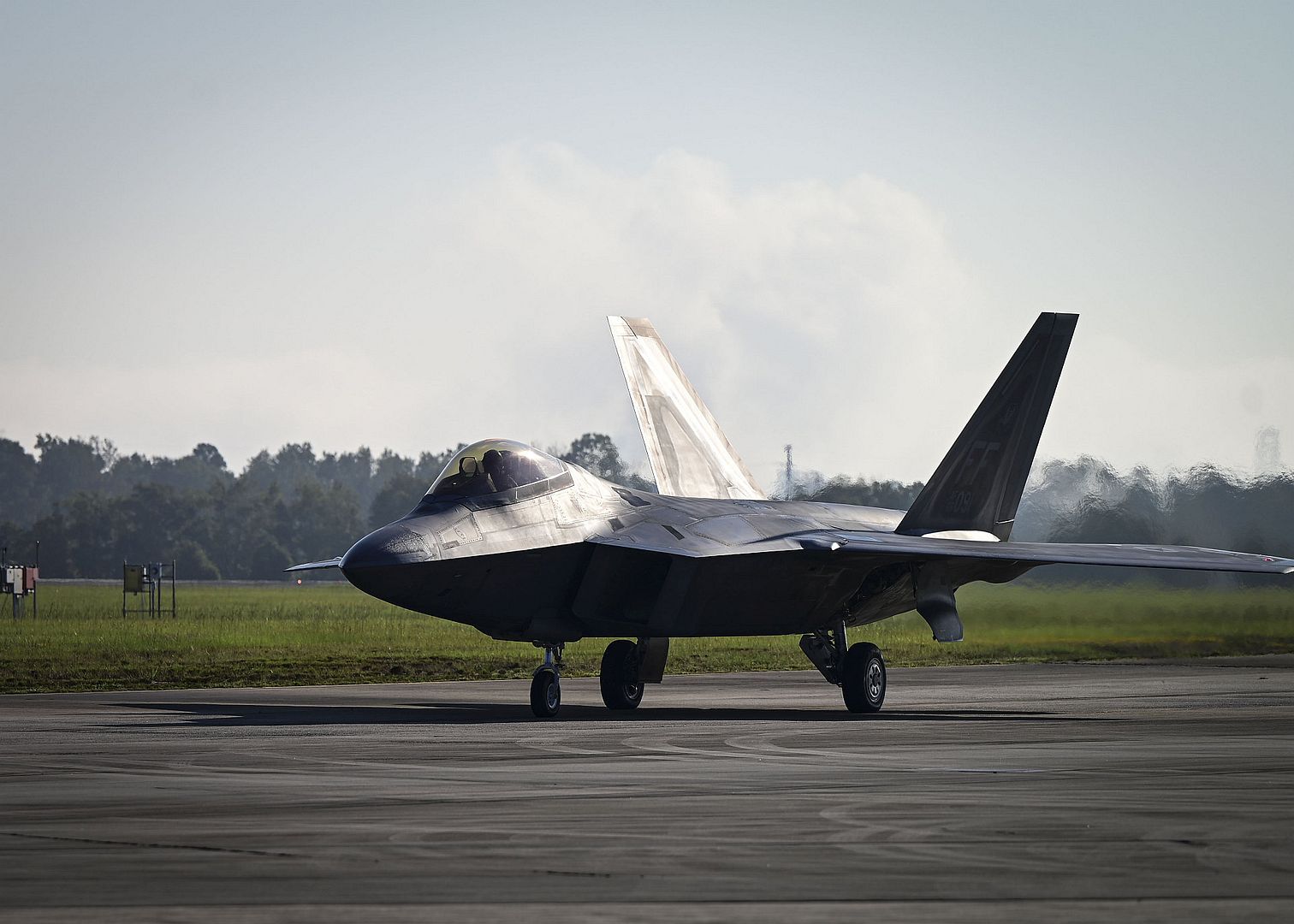
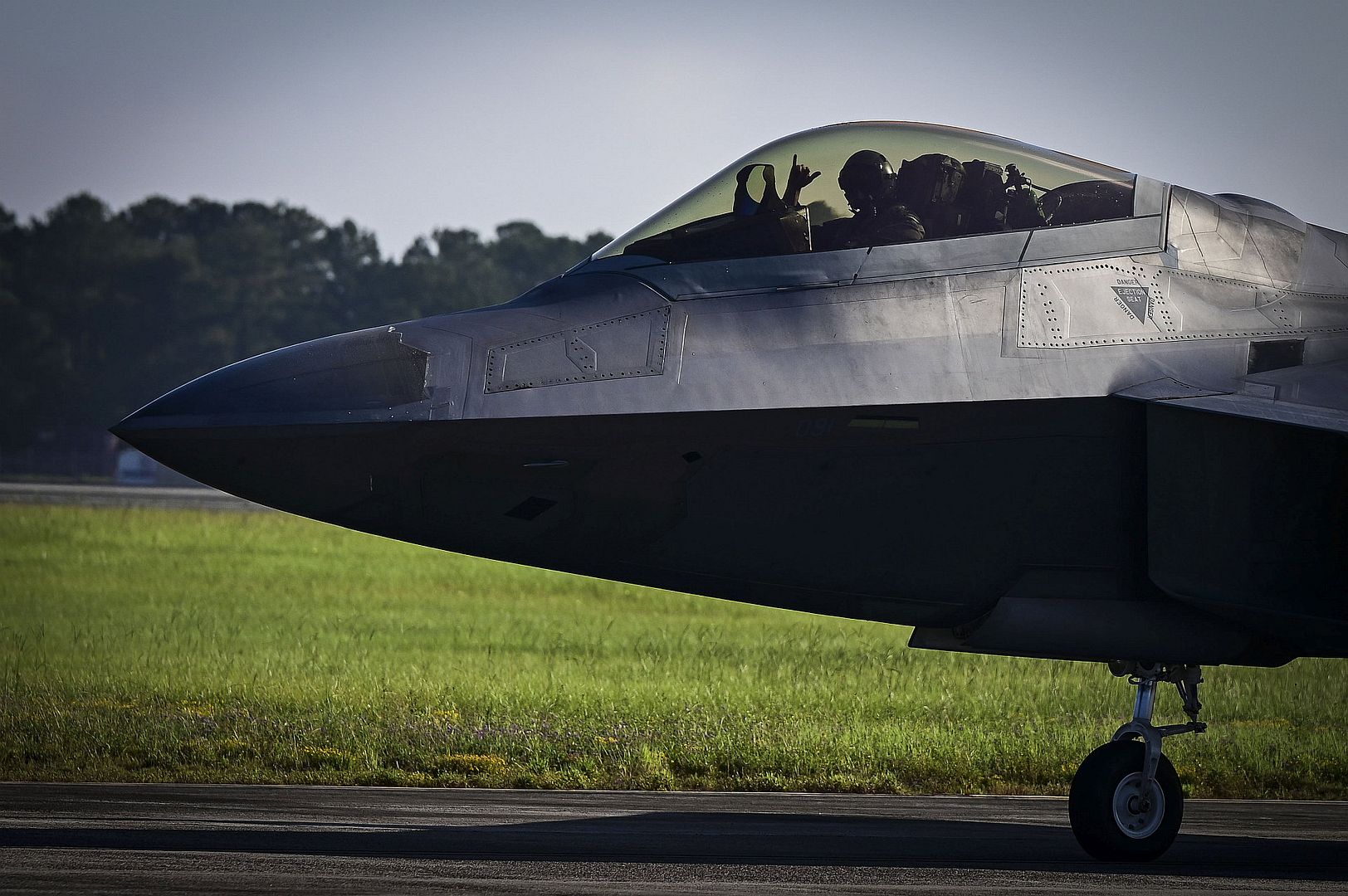
U.S. Air Force Airmen assigned to the 354th Fighter Squadron and 354th Fighter Generation Squadron work on an A-10C Thunderbolt II on Davis-Monthan Air Force Base, Ariz., Sept. 13, 2023. Airmen performed maintenance on A-10C Thunderbolt II jets to prepare them for takeoff. (U.S. Air Force photo by Airman 1st Class Robert Allen Cooke III)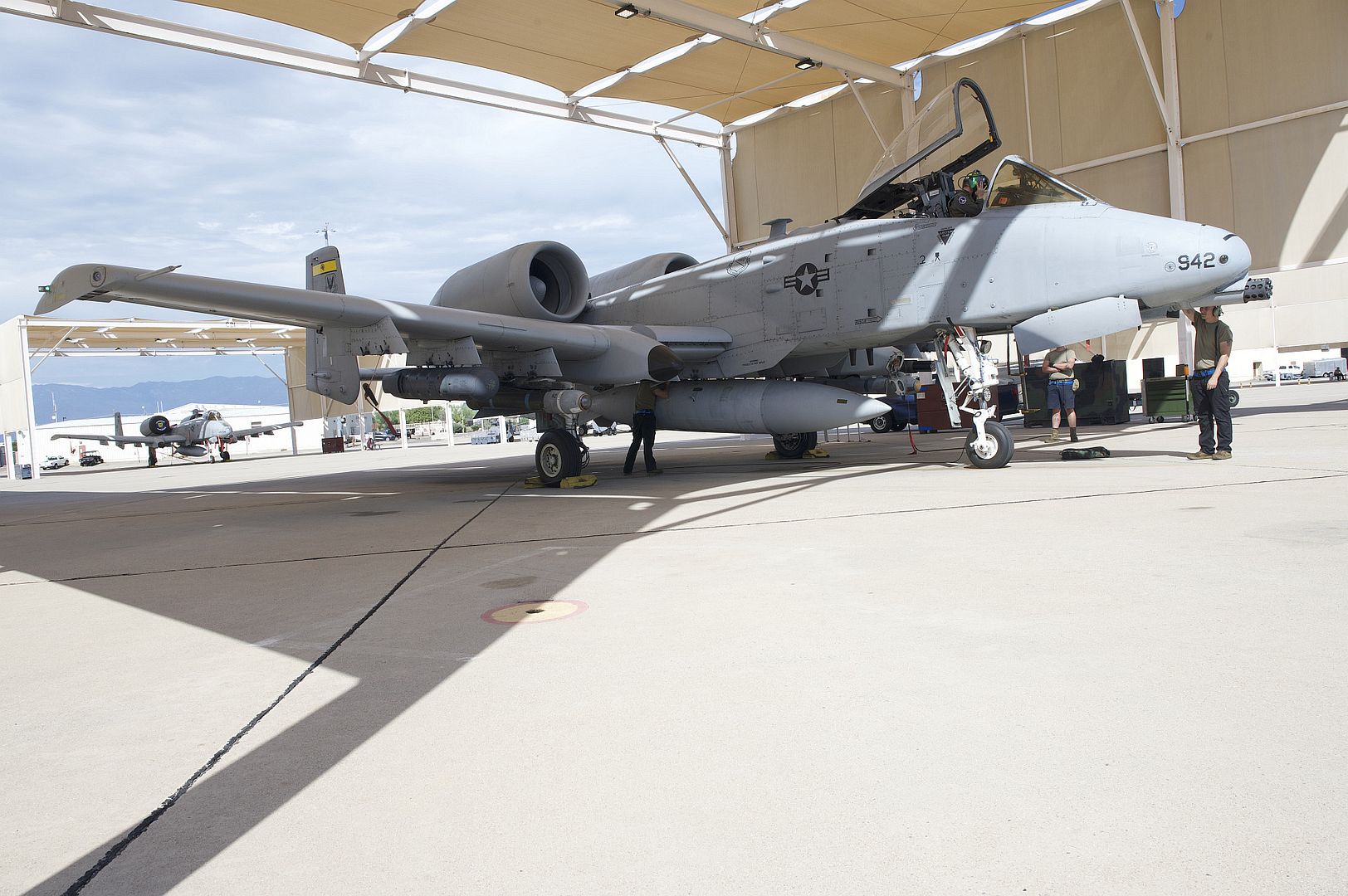
A U.S. Air Force HH-60G Pave Hawk assigned to the 33rd Rescue Squadron at Kadena Air Base, Japan, receives fuel from HC130-J Combat King II assigned to the 920th Rescue Wing at Patrick Space Force Base, Florida, during exercise Pacific Angel 23-3, Rimba Air Force Base, Brunei, Sept. 12, 2023. Pac-Angel 23-3 is a joint and combined regional humanitarian assistance and disaster relief engagement led by Pacific Air Forces at the Rimba AFB in Bandar Seri Begawan, Brunei. This iteration of Pac-Angel is focused on regional search and rescue (SAR) and Humanitarian Assistance/Disaster Response (HA/DR) capacity-building interoperability with partnering nations. (U.S. Air Force photo by Airman 1st Class Shelimar Rivera Rosado)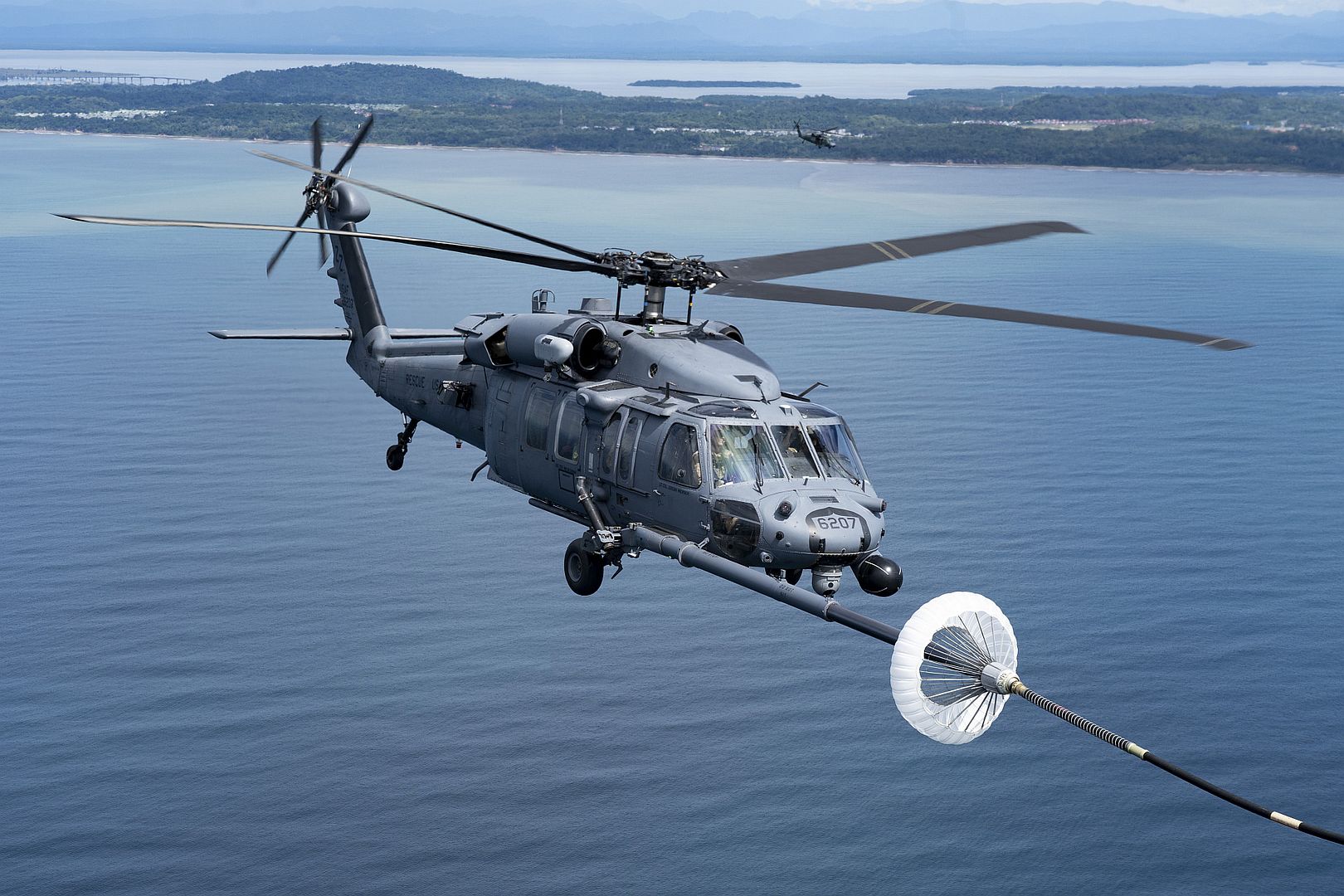
U.S. Air Force Airman from the 510th Fighter Generation Squadron marshals a jet during exercise Ample Strike at Namest Air Base, Czechia, Oct. 12, 2023. Ample Strike was an Agile Combat Employment focusing on the team’s capabilities to perform in a new environment with limited resources while performing hot pit refueling and rearming F-16 Fighting Falcons. (U.S. Air Force photo by Senior Airman Noah Sudolcan)
SAN DIEGO – Sept. 14, 2023 – Northrop Grumman Corporation’s (NYSE: NOC) multi-intelligence MQ-4C Triton uncrewed aircraft achieved a declaration of initial operating capability (IOC) by the U.S. Navy.
MQ-4C Triton is the U.S. Navy’s only uncrewed, high-altitude, long-endurance aircraft performing persistent maritime intelligence, surveillance, reconnaissance and targeting.
Since achieving early operational capability in May 2020, the U.S. Navy's Pacific Fleet employed Triton in the U.S. Indo-Pacific Command area of responsibility conducting maritime and reconnaissance missions.
Northrop Grumman has delivered five multi-intelligence Triton aircraft to the U.S. Navy, with the latest delivered June 2023.
Rho Cauley Bruner, director, Triton program, Northrop Grumman: “Triton has proven to be invaluable for the maritime patrol and reconnaissance mission in the Indo-Pacific. Now that the system has achieved initial operating capability, commanders will be able to fully leverage Triton’s powerful sensor suite to detect and deter potential adversaries around the world.”
Capt. Josh Guerre, Persistent Maritime Unmanned Aircraft Systems program manager, U.S. Navy: “Persistent global maritime awareness is central to deterring, or competing and winning against, our adversaries. Triton ensures we’re making informed decisions and effectively operating anywhere in the world.”
Built for the U.S. Navy and Royal Australian Air Force, the multi-intelligence MQ-4C Triton supports a wide range of missions including maritime patrol, signals intelligence, search and rescue and communications relay. These aircraft provide commanders with persistent surveillance for the prediction of an adversary’s behavior and enabling better planning, greatly enhancing joint military responses and operations.
With an operating altitude greater than 50,000 feet and endurance of 24 hours, Triton provides continuous communications relay to keep a distributed Navy connected, while ensuring commanders are operating off a common operational picture. Its unparalleled, long-range sensors allow it to detect, classify and track maritime targets well outside the detection of enemy ships and surface-to-air missiles.
In one 24-hour mission, Triton can survey four million nautical miles.
14 September 2023
Two Airborne Surveillance and Control (ASaC) helicopters, delivered through the Crowsnest programme, have been significantly upgraded with new software ahead of joining HMS Queen Elizabeth.
The UK flagship left Portsmouth on Friday to head north, leading a task group of partner nations and exercising her F-35 Lightning stealth fighters and Merlin helicopters.
Flying more than a mile above the carrier strike group, the ASaC aircraft use their radars, lowered underneath the fuselage in a domed bag – which earns them the nickname ‘Baggers’ in the rest of the rest of the Navy – to look ‘over the horizon’.
The helicopters’ highly-trained crews look for possible air and surface threats – and can be used to coordinate defence and strike operations.
Commander Aidan Riley, who commands the Merlin Helicopter Force, said the system had received “considerable capability enhancements” since Crowsnest debuted on the carrier’s maiden deployment to the Pacific in 2021.
He continued: “The deployment of this year’s carrier strike group is a significant milestone for our ASaC capability. The helicopters and their crews are an integral part of Merlin Helicopter Force alongside our trusted and hugely experienced antisubmarine warfare experts.”
Each Merlin has a crew of three – one pilot and two observers (the tactical operators) from 820 Naval Air Squadron, which is based at RNAS Culdrose in Cornwall. They are embarked alongside the ship’s complement of submarine hunting Merlins and anti-surface warfare Wildcat helicopters.
Commander Riley added: “We have an intensive aircrew training programme in place here at Culdrose which in the last couple of years has introduced a new generation of ‘baggers’ into the fleet.
"Operating from the carrier and her escorts, the men and women of 820 Naval Air Squadron present a formidable defence, protecting the carrier task group from possible threats above and below the water.”
Keith Bethell, Director Helicopters for Defence Equipment & Support which manages the Crowsnest Programme, said: “We have been working very closely with our industry partners and the Royal Navy to upgrade and mature Crowsnest since it was a key element of the maiden carrier strike group deployment in 2021.
“With mission system software improvements and the operational experience gained by Merlin crews on other deployments last year, it promises to be a valuable wide-area surveillance and threat reduction asset.”
(Photos courtesy of the RN)
From September 11 to 15, an A400M Atlas of the 61st Transport Wing d'Orléans and three Rafale's of the 4th Fighter Wing d'Saint-Dizier participated in the fourth edition of the "Eunomia" exercise in Greece, alongside Greek, Italian and Cyprus air and maritime fleet.
The exercise aims to strengthen the interoperability of inter-armed and interallied fleets while improving the ability to coordinate in international waters. On this occasion, the A400M Atlas for the first time escorted the Rafale over nearly 2600 km.
"This is the first time that the A400M is participating in this exercise," announces captain Antoine, pilot of the transport squadron 4/61 "Béarn".
In these circumstances, the Atlas autonomously secured the convoy of the three Rafale, to project them nearly 2,600 kilometers from the Air Base 113 in Saint-Dizier: a great first for the cargo.
"This plane is a real Swiss knife," he says. The convoy allowed us to refuel Rafale in flight and transport their technical lots and personnel so that the detachment was autonomous on site.
(Photos courtesy of the Armée de l'Air et de l'Espace)
-
 Main AdminA U.S. Air Force KC-135 Stratotanker from the Iowa Air National Guard’s 185th Air Refueling Wing is on the ramp in Sioux City, Iowa as another KC-135 takes off from the Sioux City airport on September 14, 2023.
Main AdminA U.S. Air Force KC-135 Stratotanker from the Iowa Air National Guard’s 185th Air Refueling Wing is on the ramp in Sioux City, Iowa as another KC-135 takes off from the Sioux City airport on September 14, 2023.
U.S. Air National Guard photo: SMSgt Vincent De Groot
U.S. Air Force F-16 Fighting Falcons taxi on the flight line during William Tell at the Air Dominance Center (ADC) located at the Savannah Air National Guard Base in Savannah, Georgia, Sept. 14, 2023. After a 19-year hiatus, the Air Force’s historic William Tell competition took place at the ADC Sept. 11-15 to determine the top fighter integration team in the U.S. Air Force. (U.S. Air National Guard photos by Master Sgt. Morgan R. Whitehouse)_located_at_the_Savannah_Air_National_Guard_Base_in_Savannah_Georgia_Sept._14_2023..jpg?width=1920&height=1080&fit=bounds)
_located_at_the_Savannah_Air_National_Guard_Base_in_Savannah_Georgia_Sept._14_2023.-1.jpg?width=1920&height=1080&fit=bounds)
A U.S. Navy EA-18G Growler aircraft assigned to Electronic Attack Squadron (VAQ) 209, taxis on the runway prior to take off from the Air Dominance Center (ADC), a Combat Readiness Training Center, located in Savannah, Georgia, August 24, 2023. As the U.S. Military’s only Reserve EA-18G squadron, the training opportunities offered by the ADC to test and train in air-to-air combat simulated environments is unprecedented in combination with EA-18G Growlers ability to use electronic warfare to disrupt communications in combat. (U.S. Air National Guard photo by Senior Airman Victoria Coursey)_209_taxis_on_the_runway_prior_to_take_off_from_the_Air_Dominance_Center.jpg?width=1920&height=1080&fit=bounds)
Abuja, Nigeria, 14 September 2023 – Nigeria based Air Peace, West Africa’s largest airline, has placed a firm order for five Embraer E175 aircraft. This strategic decision marks a significant step forward and is in alignment with Air Peace’s ongoing strategy of modernising its fleet. This acquisition is in line with Air Peace’s determination to become the operator of the largest and youngest fleet of aircraft in Africa. It reinforces Air Peace’s commitment to enhancing its domestic and regional network connectivity and paves the way for further regional expansion. Deliveries of the 88 seat aircraft start in 2024. The value of the order, at list price, is US$288.3m.
Already an operator of Embraer’s newest and largest jet, the E195-E2, these smaller aircraft will complement the airlines’ existing fleet, allowing Air Peace to dynamically match capacity to demand, protecting yields and route viability.
The Chairman and CEO of Air Peace, Mr Allen Onyema, said: "This is another important step in helping to realize our ambition to connect the whole of Nigeria with the entire African continent, while also feeding passengers into long-haul flights from our Lagos hub. The acquisition enables us to continue delivering on our ‘no-city-left-behind’ initiative – connectivity is what our passengers, and Africa, demand. The deal also paves the way to establish local maintenance capabilities in Nigeria, with direct support from Embraer.”
“Air Peace’s strategic and innovative approach continues to make them a powerhouse of aviation success in West Africa. Already an E2 operator, it now makes sense to upgauge their ERJ145 fleet, offering passengers more seats and comfort with the E175. The commonality of the cockpits between the E1 and E2 fleet also simplifies aircrew costs and management. Acknowledging Air Peace's significant investment in the acquisition of the Embraer fleet of aircraft, which has increased to 18 brand new firm aircraft to date, Embraer, in partnership with Air Peace is committed to directly supporting the establishment of local maintenance capabilities in Nigeria”, said Stephan Hannemann, VP Sales & Marketing, Head of Africa & Middle East Region, Commercial Aviation.
Abuja, Nigeria, 14 September 2023 – Overland Airways of Nigeria has received the first of three new E175 E-Jets. The aircraft was delivered to the airline last week. The twenty-year old West African carrier, an affiliate of the Landover Aviation Services Company, also holds options for three additional aircraft.
The carrier, which operates both scheduled and charter flights, plans to use the dual-class 88-seat E175s to increase capacity on domestic routes and expand services to regional cities. The new aircraft will supplement the airline’s current all-turboprop fleet and, “expand our reach and network,” according to Overland Airways Managing Director Capt. Edward Boyo. “Overland has an ecosystem of aviation excellence crowned with its E175 fleet. With Embraer, we now have very flexible options to grow our fleet and capacity to meet all future demand.”
“The delivery of Overland’s first new E175 marks the beginning of an exciting chapter for the airline and Embraer. Nigeria represents one of the fastest growing aviation markets in the world; Overland and Embraer are committed to the support of its continued success with a product line perfectly suited to build connectivity across West Africa”, said Stephan Hannemann, Head of Africa & Middle East Region, Commercial Aviation.
Concurrent with the arrival of its new E175s, Overland is aggressively ramping up its presence in Nigeria. It has built a new corporate office and hangar facilities in Lagos. The airline is an Approved Maintenance Organization under the certification of the Nigerian Civil Aviation Authority.
Overland’s partner, Landover Aviation Services, runs one of IATA’s top ten aviation training institutions in Africa. The Landover Aviation Business School specializes in airline technical and operations, aviation management, and travel and tourism.
Ostrava, CZECH REPUBLIC (Sept 15, 2023) – Bell Textron Inc., a Textron Inc. (NYSE: TXT) company, is commemorating the successful delivery of four H-1 helicopters to the Czech Republic during NATO Days 2023. Three AH-1Z Vipers and one UH-1Y Venom have been delivered in country as part of the 2019 deal to modernize the Czech Armed Forces with four AH-1Z Vipers and eight UH-1Y Venoms.
“We are thrilled to celebrate this tremendous occasion with the Czech Republic modernizing their helicopter fleet,” said Mike Deslatte, Bell senior vice president and H-1 program director. “These new H-1 platforms put the Czech Republic on the leading edge of fielded helicopter technology at a time when security matters more than ever.”
The AH-1Z Viper and UH-1Y Venom are Bell’s newest generation of dedicated attack and combat multirole helicopters. Bell designed both aircraft to have a minimal logistics footprint, enhancing operational speed and agility and providing militaries more versatility during strategic operations.
Bell, along with its subcontractor, Pinnacle Solutions, an Akima Company, will provide pilot, crew chief, and maintenance training, as well as maintenance support for those efforts in the Czech Republic.
“Pinnacle Solutions and Akima are pleased to support the Czech Armed Forces and Bell Textron in delivering these new and vital aircraft capabilities to the Czech Republic,” said Tina Tucker, president of Pinnacle Solutions. “Our highly experienced professionals will provide the best quality training while ensuring that the aircraft are fully maintained to complete this important phase of the aircraft fielding.”
The Czech Republic is displaying H-1 helicopters during NATO Days. Prior to the aircraft arrival, a select group of Czech pilots, aircrew and maintainers completed hands-on aircraft training with the U.S. Marines at HMLAT-303 at Marine Corps Base Camp Pendleton in California. Bell and Flight Safety International built and installed the AH-1Z dome simulator at the Czech Air Force base in Náměšt, which will bring more independence for training within the borders of the Czech Republic.
“This is the start of a new era with the Viper and Venom being a key asset for the defense and security of the Czech Republic.” Deslatte added.
Bell continues production on the remaining AH-1Z and UH-1Y at the Amarillo Assembly Center and coordinates with the Czech and U.S. Governments through the Defense Contract Management Agency (DCMA) to arrange and schedule deliveries of remaining aircraft. The Czech Air Force squadron is expected to be independently operating H-1s in late 2024.
Britain’s flagship HMS Queen Elizabeth sailed from Portsmouth to head north and lead a Carrier Strike Group deployment alongside ships from partner nations.
The aircraft carrier, crewed by up to 900 sailors, with her F-35 Lightning II stealth fighters and Merlin and Wildcat helicopters will lead a mixed group of warships from various nations as they head to the Norwegian Sea and waters of northern Europe.
The UK Carrier Strike Group deployment comes just days after HMS Prince of Wales departed Portsmouth for the United States, where she will undergo trials and operate a multitude of aircraft and drones.
First Sea Lord, Admiral Sir Ben Key, said: “It is great to see HMS Queen Elizabeth deploying once again to exercise and operate with our allies and partners, demonstrating our commitment to maintaining free and open use of the oceans for all.
“With HMS Prince of Wales having deployed last week, both our aircraft carriers are at sea this autumn operating with F35-B Lightning, ensuring the Royal Navy and Royal Air Force remain ready to deliver the nation’s conventional strike capability.”
Commodore James Blackmore, Commander of the Carrier Strike Group, added: “It is with much eagerness that the UK Carrier Strike Group is now assembling for deployed operations – the first time the UK CSG will be under my command. This autumn’s deployment showcases the UK’s capability to operate at range from the UK and demonstrates our continued commitment to North Atlantic security.
“The Carrier Strike Group is an agile and highly capable force and we are excited to be heading to the North Sea and North Atlantic along with our International Partner Nations to reinforce security across the region.”
HMS Queen Elizabeth and the Carrier Strike Group will conduct activities alongside international partners, including through the Joint Expeditionary Force (JEF) framework – highlighting the utility and strength of JEF.
A series of sorties will also be carried out by 617 Squadron – the Dambusters, the joint RAF-RN Lightning stealth fighter formation from RAF Marham – and the strike group will take part in various port visits and defence engagement events.
Captain Will King, HMS Queen Elizabeth’s Commanding Officer, said: “It is an extraordinary privilege to have command of one of the Royal Navy’s most capable ships and to lead a dedicated and highly skilled crew on operations.
“As we sail to the north leading a coalition of nations in our unwavering commitment to peace and security in Northern Europe, we stand together as a formidable force for stability in these waters.”
The 65,000-tonne carrier and her Strike Group will also join NATO allies for exercises and training in the North Atlantic.
The deployment will mark the second time the Royal Navy flagship has led an international carrier strike group, after her deployment to the Indo-Pacific in 2021.
Leading Medical Assistant Billie Grisdale is looking forward to learning more about the ship and her embarked jets during this deployment.
“The upcoming deployment means it is currently an exciting time to be part of HMS Queen Elizabeth’s crew; after a busy training period we will have the opportunity to go to sea which is what we look forward to the most,” she said.
“Whilst I am away I intend to engage fully with the embarked squadrons who provide specialist knowledge on all aspects of aviation, continue with my own personal development utilising the educational team onboard, and spend time with the many friends and colleagues I have got to know from different departments across the ship.”
HMS Prince of Wales will lead a further Carrier Strike Group deployment to the Indo-Pacific in 2025, further strengthening the UK’s defence ties in the region.
Exercise Bushido Guardian 2023 is a bilateral air combat exercise involving the Japan Air Self-Defense Force and the RAAF.
Held at Komatsu Air Base in Japan, this marks the first time RAAF F-35As have travelled to Japan as part of the biennial Bushido Guardian exercises, highlighting the continued interoperability and relationship enhancement between the two nations.

Australia is committed to a strong bilateral special strategic partnership with Japan, and contribute with our partners to the collective security of the Indo-Pacific.
(Photos courtesy of the RAAF)
-
 Main AdminA U.S. Marine Corps F-35B Lightning II aircraft with Marine Fighter Attack Squadron (VMFA) 121 lands at Misawa Air Base, Japan, Sept. 16, 2023. VMFA-121 and VMFA-242 conducted joint refueling with 35th Logistics Readiness Squadron to exercise distributed operations away from Marine Corps Air Station Iwakuni. (U.S. Marine Corps photo by Cpl. Samantha Rodriguez)
Main AdminA U.S. Marine Corps F-35B Lightning II aircraft with Marine Fighter Attack Squadron (VMFA) 121 lands at Misawa Air Base, Japan, Sept. 16, 2023. VMFA-121 and VMFA-242 conducted joint refueling with 35th Logistics Readiness Squadron to exercise distributed operations away from Marine Corps Air Station Iwakuni. (U.S. Marine Corps photo by Cpl. Samantha Rodriguez)_121_lands_at_Misawa_Air_Base_Japan_Sept._16_2023..jpg?width=1920&height=1080&fit=bounds)
A U.S. Marine Corps F-35B Lightning II aircraft with Marine Fighter Attack Squadron (VMFA) 121 prepares to taxi the runway at Misawa Air Base, Japan, Sept. 16, 2023. VMFA-121 and VMFA-242 conducted joint refueling with 35th Logistics Readiness Squadron to exercise distributed operations away from Marine Corps Air Station Iwakuni. (U.S. Marine Corps photo by Cpl. Samantha Rodriguez)_121_prepares_to_taxi_the_runway_at_Misawa_Air_Base_Japan_Sept._16_2023..jpg?width=1920&height=1080&fit=bounds)
Virginia Beach, Va. (Sept. 17, 2023) - The Rhino Demonstration Team of Strike Fighter Squadron (VFA) 106 performs during the 2023 NAS Oceana Air Show. The NAS Oceana Air Show is a chance for the Navy to give back to the community, showcasing Naval aviation to visitors from across the country and around the world. (U.S. Navy photo by Mass Communication Specialist 2nd Class Megan Wollam)_106_performs_during_the_2023_NAS_Oceana_Air_Show..jpg?width=1920&height=1080&fit=bounds)
A U.S. Air Force F-16 Fighting Falcon and an A-10 Thunderbolt II, and Egyptian Air Force F-16s fly in formation off of the wing of a U.S. Air Force KC-10 Extender during Exercise Bright Star 23 over Egypt, Sept. 14, 2023. Bright Star 2023 is a multilateral U.S. Central Command exercise held with the Arab Republic of Egypt across air, land and sea domains that promotes and enhances regional security and cooperation, and improves interoperability in irregular warfare against hybrid threat scenarios. (U.S. Air Force photo by Staff Sgt. Emily Farnsworth)
Pakistan Air Force JF-17 Thunder aircraft fly with a U.S. Air Force KC-10 Extender during exercise Bright Star 23 over Egypt, Sept. 14, 2023. Bright Star 2023 is a multilateral U.S. Central Command exercise held with the Arab Republic of Egypt across air, land and sea domains that promotes and enhances regional security and cooperation, and improves interoperability in irregular warfare against hybrid threat scenarios. (U.S. Air Force photo by Staff Sgt. Emily Farnsworth)
Sept. 14, 2023 | By Greg Hadley
The Air Force has selected four more Air National Guard wings to transition to the new C-130J Super Hercules, a key inflection point as the Guard modernizes.
The C-130Js feature a roomier, “stretched” fuselage, more powerful engines with composite six-blade propellers, and digital avionics and mission computers. That means J’s can fly faster, higher, and farther than the C-130H.
The four wings receiving new C-130Js in place of H-models:
103rd Airlift Wing, in Connecticut
120th Airlift Wing, in Montana
133rd Airlift Wing, in Minnesota
182nd Airlift Wing, in Illinois
Each wing is getting eight C-130Js, with the timeline to be determined, according to a release. Final approval of the plan is pending as the Air Guard awaits completion of an environmental impact study no later than fiscal 2025.
Six other Guard wings are already flying or scheduled to receive the C-130J:
123rd Airlift Wing, in Kentucky
130th Airlift Wing, in West Virginia
136th Airlift Wing, in Texas
143rd Airlift Wing, in Rhode Island
146th Airlift Wing, in California
165th Airlift Wing, in Georgia
Additionally, the Arkansas Air National Guard’s 189th Airlift Wing has been selected to host the Guard’s C-130J Formal Training Unit, gaining four C-130Js in addition to its existing C-130H schoolhouse.
The 165th Wing in Georgia is the latest unit to make the transition to the J model. Its last C-130H departed Savannah Air National Guard Base, Ga., on Aug. 18, and the newer aircraft are slated to start arriving in December.
Once the latest four wings receive their new airframes, the Guard will have more J-models than H’s, with just five units still flying the older model:
139th Airlift Wing, in Missouri
152nd Airlift Wing, in Nevada
153rd Airlift Wing, in Wyoming
166th Airlift Wing, in Delaware
179th Airlift Wing, in Ohio
The Guard is catching up to the Active-Duty force, which has already completed its transition from the C-130H
(U.S. Air Force photo by Yasuo Osakabe)
September 18, 2023
At last week’s Air and Space Forces Association’s Air, Space and Cyber Conference, Air Force and DoD leadership discussed the B-21 program in terms of effective program management, production readiness and early integration of sustainment elements as foundational to the effective delivery of operational capability.
Additionally, the U.S. Air Force announced Northrop Grumman has commenced engine runs on the B-21, a significant milestone in the aircraft’s ground test program. While the B-21 first flight will be a data driven event closely monitored by Northrop Grumman and the U.S. Air Force, key programmatic decisions and strategies are placing the program in a positive position moving forward.
Here's a recap of the discussions and themes from the show held at National Harbor.
Production representative aircraft
One key to the overall program strategy established from the outset was to build a production representative first test article. Rather than a prototype, the first B-21 Raider test article has been built with rigorous production processes on the same manufacturing line with equal tooling that will be utilized to continue shaping the B-21 fleet. Unique to aircraft development programs, the first B-21 test article is equipped with its primary mission systems such as communications and navigation systems.
The decision to build a highly representative test vehicle will allow Northrop Grumman and the Air Force to conduct a robust flight test campaign and pull discovery left, in alignment with the program’s execution strategy from the outset.
“The B-21 program is a prime example of how industry can be a capable partner in providing systems that meet critical needs, efficiently. The first test aircraft was built by our technicians using factory production processes; we’re doing that learning and refining in parallel, which will enable us to get to stable and steady production more quickly,” said Tom Jones, sector president for Northrop Grumman Aeronautics Systems.
Sustainment influencing design
Beyond focusing on production in the early stages of the program, the B-21 program took sustainment into account during the design phase. In addition to driving efficiency over the long term, this approach also yields more near-term benefits.
“Given Northrop Grumman’s focus on sustainment early in development, the B-21 is much further along on tech data than we would typically expect on a new program at this point,” said Doug Young, vice president and division general manager, Northrop Grumman Aeronautics Systems. “Development of content such as product support, materiel readiness and training is well underway, giving B-21 a head start on support and sustainment operations ahead of delivery to the user community.”
Proven digital model fidelity
Developed with a digital thread over the program life cycle, the B-21 Raider utilizes the latest in digital tools and capabilities from design to development and test, and ultimately in sustainment. This focus on the B-21 digital ecosystem coupled with investment in labs and testing facilities has allowed the Northrop Grumman team to digitally model B-21 performance prior to physical movements or needs.
As the B-21 undergoes various ground tests, digital models are outperforming industry standards with twice the accuracy. This is evident in initial testing with the first test article performing as expected; testing of the engines, weapons bay doors, landing gear and control services demonstrated expected results and indicates the effectiveness and value of digital modeling.
Defining sixth-gen capability
The B-21 Raider is the world’s first sixth-generation aircraft, backed by decades of expertise in stealth technology and optimized for the high-end threat environment. With its open architecture and application of cloud technology, the B-21 Raider is built for seamless incorporation of software upgrades and new capabilities. Northrop Grumman has already demonstrated the B-21 will be capable of integrating third party technology, supporting the program’s utmost focus on modernization and need to keep the weapon system on the leading edge of future threats.
The program’s novel approach to program execution coupled with effective application of digital technologies demonstrates a focus on delivering exceptional capability, effectively and efficiently.
CobraWarrior week 3 is about to start!
(Photo courtesy of the RCAF)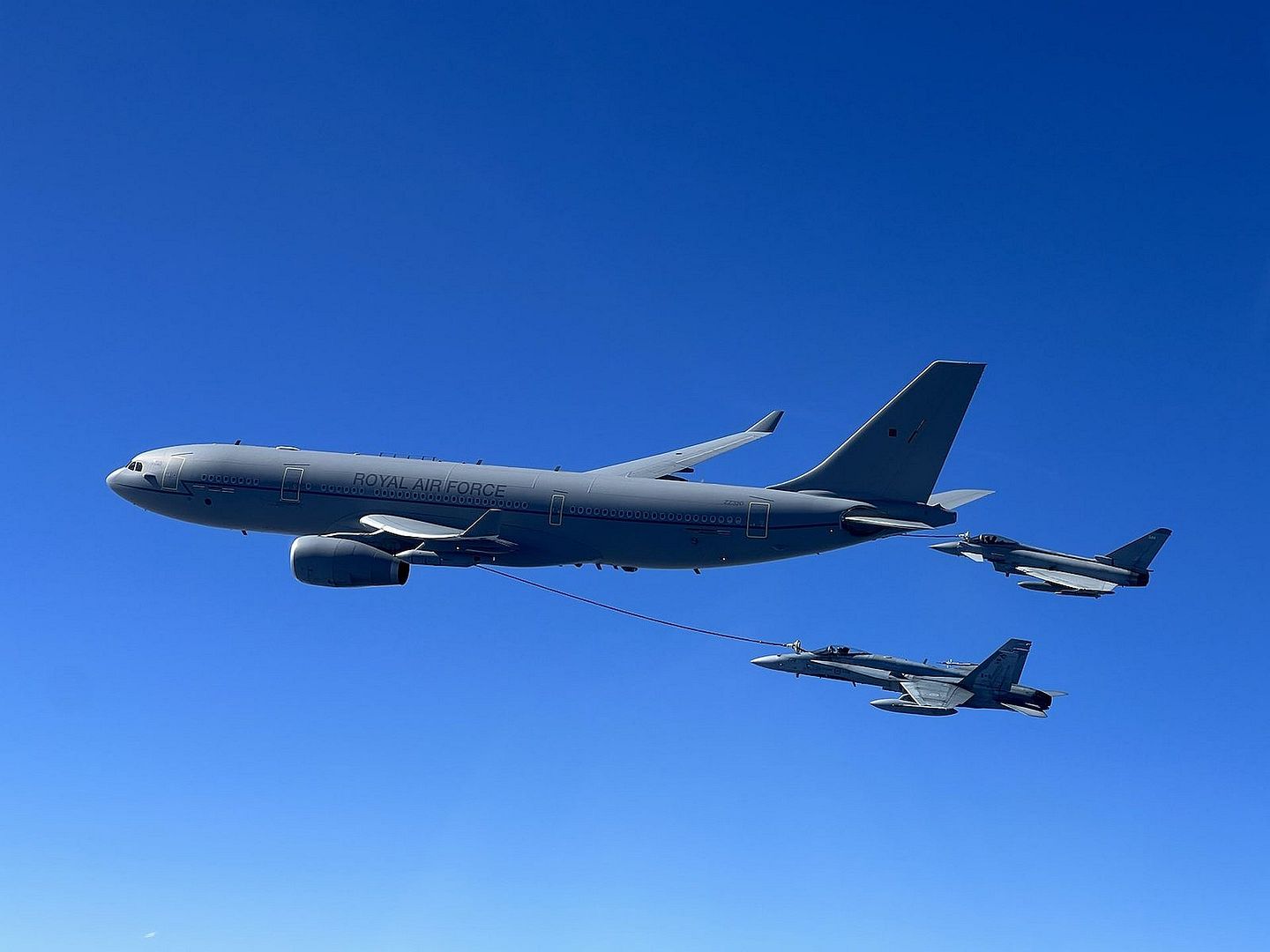
-
 Main AdminVarious types of aircraft from several different countries sit on the flightline at Ramstein Air Base, Germany, Sept. 19, 2023. Ministers of defense and key military leaders from over 50 countries attended the 15th Ukraine Defense Contact Group on Sept. 19, 2023, to discuss the ongoing conflict in Ukraine and how to continue providing the Ukrainian people with the means necessary to protect themselves against Russia’s continued aggression. (U.S. Air Force photos by Senior Airman Joshua T. Crossman)
Main AdminVarious types of aircraft from several different countries sit on the flightline at Ramstein Air Base, Germany, Sept. 19, 2023. Ministers of defense and key military leaders from over 50 countries attended the 15th Ukraine Defense Contact Group on Sept. 19, 2023, to discuss the ongoing conflict in Ukraine and how to continue providing the Ukrainian people with the means necessary to protect themselves against Russia’s continued aggression. (U.S. Air Force photos by Senior Airman Joshua T. Crossman)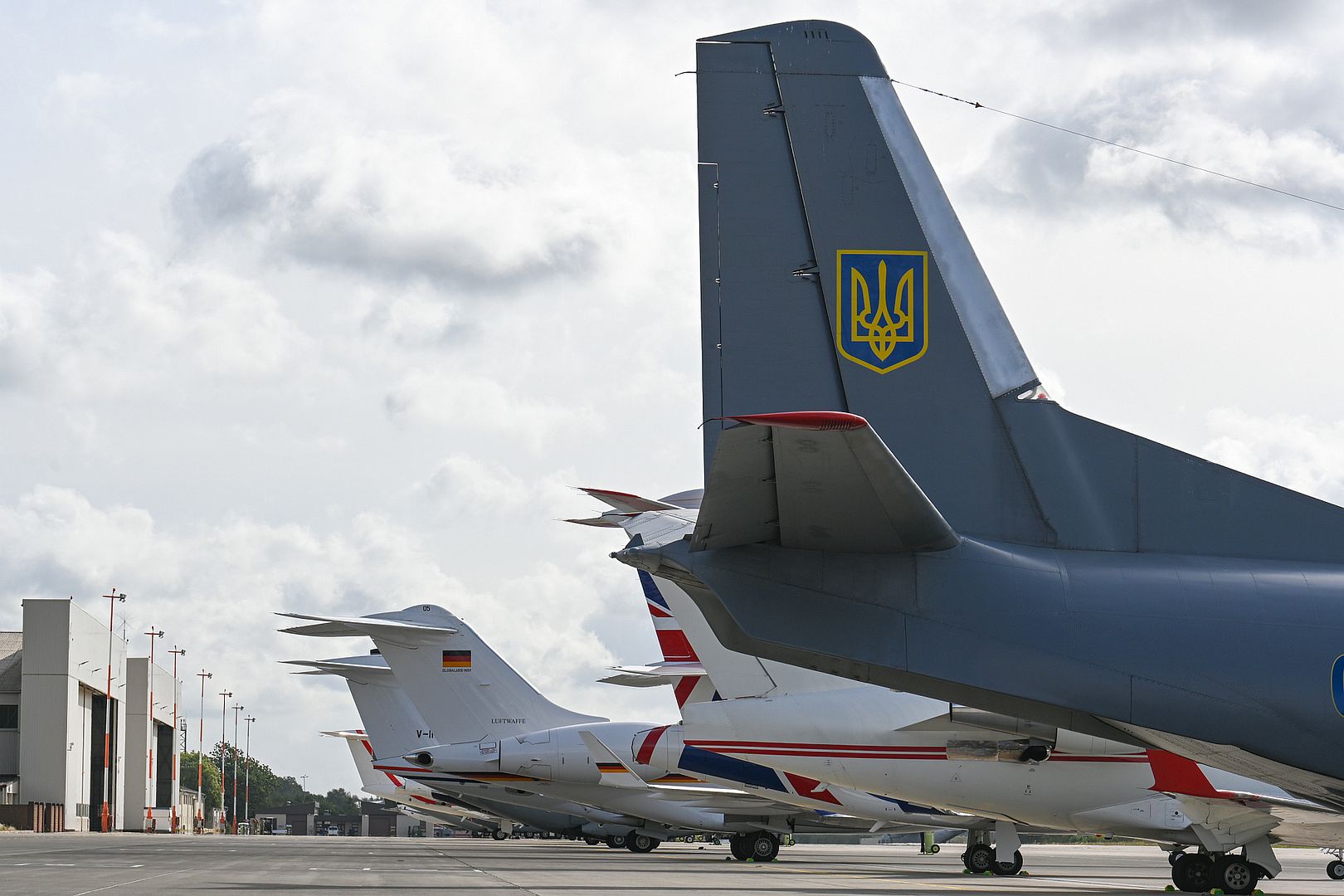

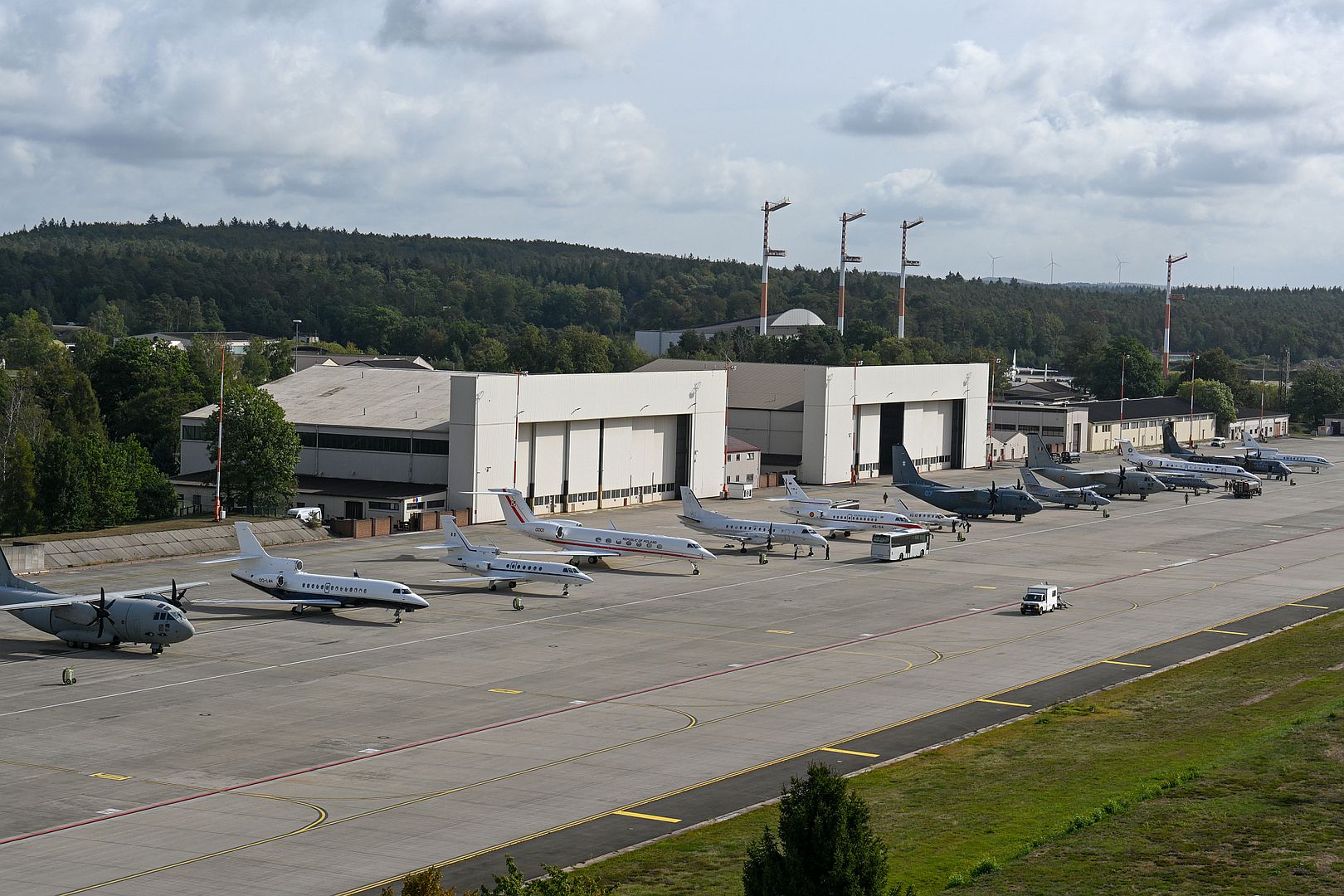
Amsterdam, September 19, 2023 – Embraer and FlightSafety International today announced the opening of a new Praetor full-flight simulator in Orlando, Florida. The simulator is already qualified by the Federal Aviation Administration (FAA). Initial training for customers is available this month with the recurrent training scheduled to start in October. Both companies also announced the launch of the fourth Praetor simulator, which will be based in Europe, at a location to be announced at a later date. The new Praetor simulator is planned to start operating by the end of 2024.
“Offering additional training capacity is important for supporting our customers. These two new full-flight simulators bring us even closer to Praetor family pilots and operators in the United States and Europe and will provide us with the opportunity to share our latest technological updates and best-in-class support,” said Carlos Naufel, President & CEO, Embraer Services & Support.
“FlightSafety is committed to addressing the increasing demand for Embraer Praetor training,” said Nate Speiser, Executive Vice President of FlightSafety Sales and Marketing. “As Embraer’s training partner, we are proud to announce consecutive simulator deployments in two regions to support the worldwide training demand for this quickly growing fleet.”
About the Praetor Jets
The Praetor 500 and the Praetor 600 are the most technologically advanced aircraft in their categories. The Praetor 500 surpassed certification goals, achieving an intercontinental range of 3,340 nautical miles (6,186 km) with four passengers and NBAA IFR Reserves. The Praetor 500 is the farthest- and fastest-flying midsize jet, capable of true North America corner-to-corner, nonstop flights, such as Miami to Seattle or Los Angeles to New York. Its sibling, the Praetor 600, is the farthest-flying super-midsize jet in the world, capable of nonstop flights from Paris to New York or São Paulo to Miami. With four passengers and NBAA IFR Reserves, the Praetor 600 has intercontinental range of 4,018 nautical miles (7,441 km).
The Embraer DNA Design interior eloquently explores every dimension of the cabins of the Praetor jets, including a six-foot-tall, flat-floor cabin, with stone flooring, and a vacuum service lavatory. The class-exclusive turbulence reduction capability and 5,800-foot cabin altitude, complemented by a whisper-silent cabin, have set the highest standards in customer experience in both the midsize and super-midsize categories. The largest baggage compartment in the class is complemented by a generous wardrobe and a full vanity in the rear private lavatory.
Advanced technology throughout the cabin is also a trait of the Embraer DNA Design, beginning with the industry-exclusive Upper Tech Panel that displays flight information and offers cabin management features also available on personal devices through Honeywell Ovation Select. High-capacity, ultra-high-speed connectivity for all aboard is available through Viasat’s Ka-band, with typical speeds of around 20Mbps and video streaming capability, another industry-exclusive in midsize jets.
About Embraer Executive Jets
Embraer is creating tomorrow’s world of bespoke private air travel today, utilizing industry-leading innovation, design, and technology — all the while incorporating sustainable and socially responsible practices. As a global company with more than 50 years in aerospace, Embraer delivers the ultimate experience in business aviation through aircraft that feature disruptive performance, technology, and comfort. Its portfolio consists of the Phenom 100EV, which offers the business aviation experience in its purest form; the Phenom 300E, which is the best-selling light jet for the past 11 consecutive years; and the Praetor 500 and the Praetor 600, the most disruptive and technologically advanced midsize and super-midsize business jets, respectively. Every day, Embraer business aircraft operate around the globe, supported by a strong, responsive customer support network that’s top-ranked in service across the industry. For more information, visit executive.embraer.com.
About FlightSafety International
FlightSafety International is the world’s premier professional aviation training company and supplier of flight simulators, visual systems and displays to commercial, government and military organizations. The company provides training for pilots, technicians and other aviation professionals from 167 countries and independent territories. FlightSafety operates the world’s largest fleet of advanced full-flight simulators at Learning Centers and training locations in the United States, Canada, France, the United Kingdom and Singapore. For more details, please visit flightsafety.com.
WICHITA, Kan. (Sept. 19, 2023) — McCauley Propeller Systems today announced the first delivery and entry into service of its newest C780 propeller for the Beechcraft King Air B300 series, following its successful installation at Textron Aviation’s Tampa Service Center. The new propeller, which features four aluminum swept blades and a 105-inch diameter, achieved Federal Aviation Administration (FAA) type certification in July 2023.
McCauley Propeller Systems is a division of Textron Aviation Inc., a Textron Inc. (NYSE: TXT) company.
“The new McCauley C780 offers King Air customers increased performance, a quieter cabin and greater efficiency,” said Heidi McNary, vice president and general manager, McCauley Propeller Systems. "For 85 years, McCauley has been committed to delivering creative solutions and driving customers forward with their pioneering designs and strategies. We look forward to continuing to support the future of flight and legendary aircraft like the Beechcraft King Air."
The Textron Aviation Service Center installed the first C780 propeller on a Beechcraft King Air 350 owned by ExecuJet Charter Service, Inc. Located in Florida, ExecuJet provides full concierge private air charter services to customers seeking flexibility and efficiency.
“I have always had tremendous reliability and service with the McCauley product line,” said Robert Jones, director of Maintenance at ExecuJet Charter Service, Inc. “We couldn’t be more thrilled. The aircraft is going to look and perform incredibly well.”
With the new C780 propeller, King Air B300 owners and operators will experience:
Propeller weight savings of more than 50 pounds
Increased takeoff and climb performance
Reduced noise in the cabin and cockpit
Extended Time Between Overhaul (TBO) of 5,000 hours or 72 months
Textron Aviation’s 4,000 hours or 36-month limited propeller warranty
King Air B300 customers can have the propeller installed on their aircraft at a Textron Aviation Service Center or Authorized McCauley Service Facility without any additional modifications required.
About McCauley Propeller Systems
McCauley is one of the world's largest full-line propeller manufacturers, with more than 500 models available. With more than 85 years of design and manufacturing experience, McCauley continues to be a pioneer in the general aviation industry. Historically, our propellers are FAA certified as original equipment for aircraft built by Textron Aviation, British Aerospace, Fairchild, Grumman, Jetstream, Piper, Stoddard Hamilton and many others. Our product lines have always served a wide range of markets: commercial, military, agricultural and commuter airlines, as well as personal and business aviation. McCauley propellers are in the field on more than 350,000 aircraft around the world - a testimony to our continuing commitment to excellence. For more information, visit www.mccauley.txtav.com.
About Textron Aviation
We inspire the journey of flight. For more than 95 years, Textron Aviation Inc., a Textron Inc. company, has empowered our collective talent across the Beechcraft, Cessna and Hawker brands to design and deliver the best aviation experience for our customers. With a range that includes everything from business jets, turboprops, and high-performance pistons, to special mission, military trainer and defense products, Textron Aviation has the most versatile and comprehensive aviation product portfolio in the world and a workforce that has produced more than half of all general aviation aircraft worldwide. Customers in more than 170 countries rely on our legendary performance, reliability and versatility, along with our trusted global customer service network, for affordable and flexible flight.
For more information, visit www.txtav.com | www.defense.txtav.com | www.scorpionjet.com.
-
1 year agoWed Sep 20 2023, 08:45pmDuggy
 Main AdminA U.S. Air Force F-16 Fighting Falcon assigned to the 36th Fighter Squadron is marshalled out of its hangar as it prepares for departure to Malaysia in support of Cope Taufan 23 at Osan Air Base, Republic of Korea, Sept. 18, 2023. As a bilateral tactical airlift training exercise, CTFN23 provides an opportunity for U.S. Air Force and Royal Malaysia Air Force members to work closely together to improve the nations’ abilities to integrate combat air force capabilities. CTFN23 is intended to improve U.S. and Malaysian readiness while reinforcing U.S. Indo-Pacific Command’s theater security campaign goals in southeast Asia. (U.S. Air Force photo by Staff Sgt. Kelsea J. Caballero)
Main AdminA U.S. Air Force F-16 Fighting Falcon assigned to the 36th Fighter Squadron is marshalled out of its hangar as it prepares for departure to Malaysia in support of Cope Taufan 23 at Osan Air Base, Republic of Korea, Sept. 18, 2023. As a bilateral tactical airlift training exercise, CTFN23 provides an opportunity for U.S. Air Force and Royal Malaysia Air Force members to work closely together to improve the nations’ abilities to integrate combat air force capabilities. CTFN23 is intended to improve U.S. and Malaysian readiness while reinforcing U.S. Indo-Pacific Command’s theater security campaign goals in southeast Asia. (U.S. Air Force photo by Staff Sgt. Kelsea J. Caballero)
An F-16 Fighting Falcon assigned to the 8th Fighter Wing taxis across the runway during Beverly Pack 23-3 at Kunsan Air Base, Republic of Korea, Sept. 17, 2023. After five months of runway reconstruction, 8th FW F-16s resume normal operations at Kunsan AB including routine training like Beverly Pack 23-3 which focuses on strengthening the wing’s rapid response capabilities. (U.S. Air Force photo by Staff Sgt. Samuel Earick)
An F-16 Fighting Falcon assigned to the 80th Fighter Squadron takes off during Beverly Pack 23-3 at Kunsan Air Base, Republic of Korea, Sept. 18, 2023. Routine training events like Beverly Pack 23-3 are vital to maintaining a properly postured force prepared to deliver airpower in the U.S. Indo-Pacific Command area of responsibility at any time. (U.S. Air Force photo by Staff Sgt. Samuel Earick)
NAVAL AIR STATION NORTH ISLAND, Calif. (Sept. 20, 2023) A C-2A "Greyhound," assigned to the “Providers” of Fleet Logistics Support Squadron (VRC) 30 begins to take off during VRC-30’s final flight. VRC-30 began flying the C-2A "Greyhound" in 1981 and continued to use the aircraft for carrier onboard delivery (COD) to transport passengers, equipment, gear and supplies around the fleet for 42 years. (U.S. Navy photo by Mass Communication Specialist 2nd Class Keenan Daniels)_30_begins_to_take_off_during_VRC-30_s_final_flight..jpg?width=1920&height=1080&fit=bounds)
NAVAL AIR STATION NORTH ISLAND, Calif. (Sept. 20, 2023) A C-2A "Greyhound," assigned to the “Providers” of Fleet Logistics Support Squadron (VRC) 30 performs a flyover as part of VRC-30’s final flight. VRC-30 began flying the C-2A "Greyhound" in 1981 and continued to use the aircraft for carrier onboard delivery (COD) to transport passengers, equipment, gear and supplies around the fleet for 42 years. (U.S. Navy photo by Mass Communication Specialist 2nd Class Keenan Daniels)_30_performs_a_flyover_as_part_of_VRC-30_s_final_flight..jpg?width=1920&height=1080&fit=bounds)
A U.S. Air Force F-35A Lightning II assigned to the 388th Fighter Squadron taxis down the flightline during William Tell at Savannah Air National Guard Base, Georgia, Sept. 11, 2023. William Tell simulates real combat scenarios, challenging participants in air-to-air combat, aerial gunnery and air-to-ground targeting, including the combat and control aspects relating to participating aerial assets. (U.S. Air Force photo by Staff Sgt. Kaitlyn Ergish)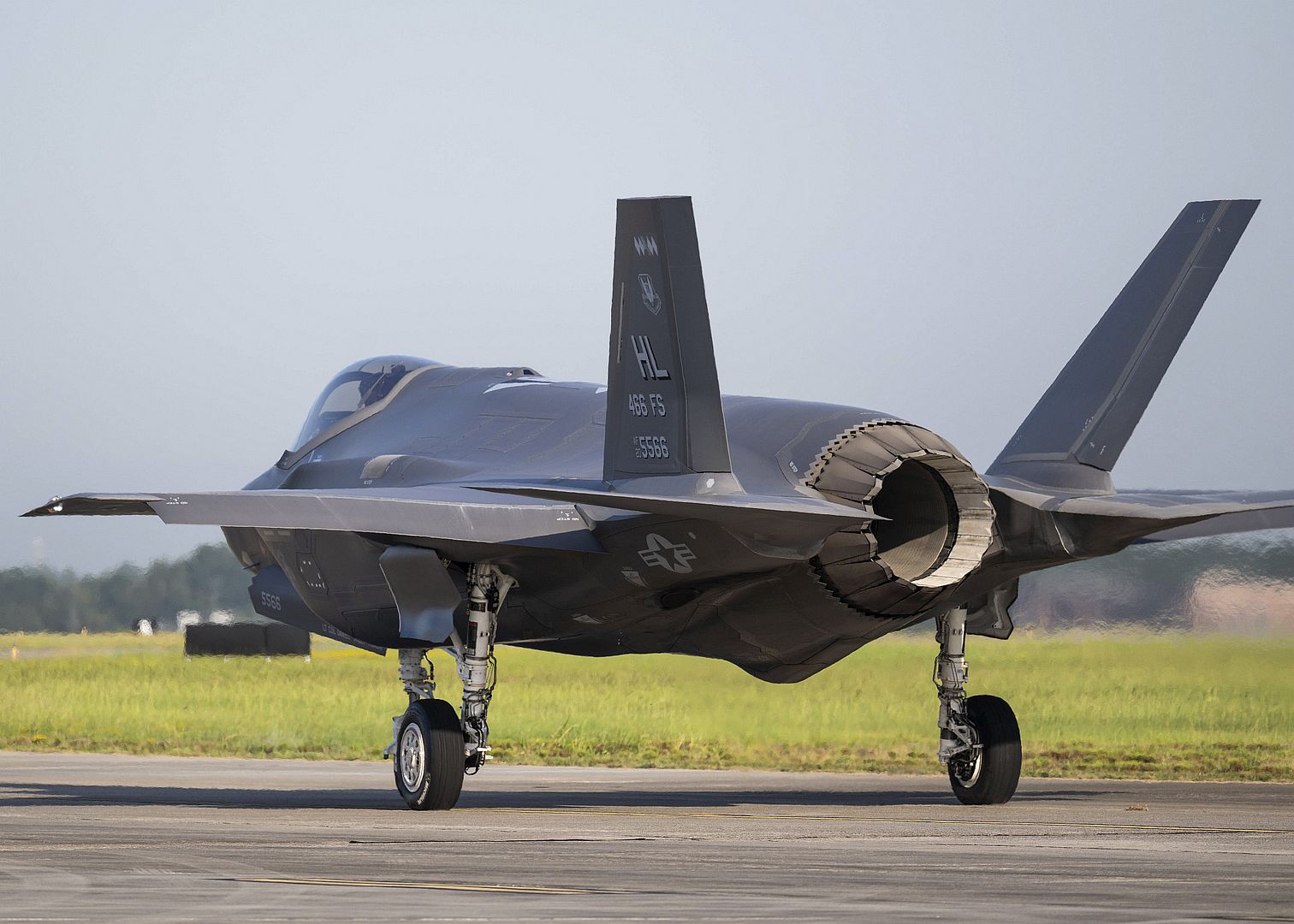
The Austrian Ministry of Defense announced today the decision to select the C-390 Millennium aircraft as its new tactical transport solution. Embraer is honored to be chosen to support this important Air Force in Europe.
Austria joins Brazil, Portugal, Hungary and the Netherlands as future operator of the C-390 Millennium multi-mission platform, an aircraft that is rapidly redefining the standards of tactical transport in the world defense market.
Embraer is ready to support the Austrian Ministry of Defense and Air Force in order to meet the demanding requirements of their acquisition process and prepared to further strengthen the relationship with this nation.
WICHITA, Kansas (Sept. 20, 2023) — Textron Aviation and NetJets® today announced a record-breaking fleet agreement for the option for NetJets to purchase up to 1,500 additional Cessna Citation business jets over the next 15 years. This agreement extends NetJets’ existing fleet agreement, and includes options for an increasing number of aircraft each year, enabling NetJets to expand its fleet with Cessna Citation Ascend, Citation Latitude and Citation Longitude aircraft. Equally exciting is the announcement that NetJets has been named the fleet launch customer for Textron Aviation’s newest jet — the Citation Ascend. Deliveries of the Citation Ascend are expected to begin in 2025 when the aircraft, currently under development, is expected to enter into service.
Cessna Citation business jets are designed, produced and delivered by Textron Aviation Inc., a Textron Inc. (NYSE:TXT) company. NetJets is a proud Berkshire Hathaway company.
“NetJets customers around the world continually select Citations as their aircraft of choice. We’re honored to be the largest provider of industry-leading aircraft to NetJets and look forward to continuing to work together to design and deliver the best aviation experience based on customer feedback,” said Ron Draper, president and CEO, Textron Aviation. “Expanding and adding the Citation Ascend to the NetJets fleet will provide its global customers with even more versatility and flexibility to accomplish their missions, building upon the exceptional performance and popularity of the Latitude and Longitude.”
Since the inception of the more than 40-year relationship between the companies, NetJets has taken delivery of more than 800 aircraft from Textron Aviation, including exercising over 300 options for Citation Latitudes and Longitudes during the past eight years. This enduring relationship equips discerning customers with class-leading, safe, and reliable aviation travel experiences worldwide. Through the years, NetJets has owned and operated industry-leading Citations including the Citation SII, V, Excel/XLS, Sovereign, X, Latitude and Longitude models.
“As a long-time, trusted ally who shares our commitment to safety and service, Textron Aviation is the ideal partner to help us expand our offerings to NetJets Owners with the introduction of the new Ascend to our midsize jet class, as well as by growing our overall fleet,” said Doug Henneberry, NetJets Executive Vice President, Aircraft Asset Management. “Based on past demand for the popular Citation Latitude and Longitude, the new Ascend and all our new Citations will undoubtedly be well received by our Owners, particularly those who depend on NetJets to help them do more and miss less.”
Cessna Citations are renowned for their ability to combine reliability, efficiency and comfort with advanced technology and class-leading performance, and no other family of business jets offers such a seamless progression of aircraft with extraordinary capabilities. Since Cessna delivered its first Citation in 1972, it has set the standard in the business jet market, often achieving the most deliveries annually across the business and general aviation industry.
The Citation series of business jets has evolved to offer an unmatched range of capabilities, systems and options that allow customers to expand their business reach. More than 30 Citation models have been certified over the 50-year history of the Citation line. There are currently six Citation models in production: Citation M2 Gen2, Citation CJ3+, Citation CJ4 Gen2, Citation XLS Gen2, Citation Latitude and Citation Longitude, with the Citation Ascend under development.
About the Cessna Citation Ascend
The Citation Ascend is designed to bring an entirely new cockpit, improved performance and a more luxurious cabin to the midsize business jet market. Preliminary performance targets indicate a four-passenger range of 1,900 nm at high-speed cruise power (with an estimated maximum range of 2,100 nm), cruise at 441 kts and the ability to climb direct to 45,000 ft.
With sleek and modern features, NetJets owners will enjoy many of the luxuries found in the bestselling Citation Latitude and Citation Longitude, including a flat floor to provide generous legroom and flexibility for passengers. The aircraft will offer Pratt & Whitney Canada PW545D engines designed to deliver fuel efficiency and increased thrust, as well as state-of-the-art Garmin G5000 avionics that feature the latest software and hardware, including autothrottle technology. The Ascend also features a Honeywell RE100 [XL] Auxiliary Power Unit (APU) approved for unattended operations.
The anticipated Ascend design for NetJets will feature a standard seating configuration for seven passengers, a full refreshment center and a spacious baggage compartment.
About the Cessna Citation Latitude
The Citation Latitude is the most in-demand aircraft within the NetJets fleet. The midsize business jet, with a four-passenger range of 2,700 nautical miles (5,000 km) at high-speed cruise, is set apart from the competition by its combination of comfort and efficiency. The aircraft’s class-leading take-off field length of 3,580 feet provides operators with greater range out of short fields. Inside, the Citation Latitude offers an unrivaled cabin experience featuring the most open, spacious, bright and refined cabin environment in its category.
NetJets’ Latitude features a standard seating configuration for seven passengers, a generous amount of cabin space, ample storage, and a spacious lavatory and baggage compartment. With a flat floor and six feet of cabin height, innovation abounds with exceptional features designed throughout the aircraft. The wireless cabin management system provides productive connectivity and entertainment to each passenger through their personal electronic devices.
About the Citation Longitude
With a range of 3,500 nautical miles (6,482 kilometers) and full fuel payload of 1,600 pounds (726 kilograms), Textron Aviation designed the Citation Longitude to elevate passenger expectations in the super-midsize class by delivering cabin sound levels that are nearly twice as quiet as the nearest competitor, a low cabin altitude (1,509 meters / 4,950 feet), more standard features and an elegant yet comfortable, bespoke interior, fully meeting the NetJets standard for customer satisfaction.
NetJets’ Longitude features a standard double-club configuration of eight fully berthable seats, delivering the most legroom in the super-midsize class. A stand-up, 6-foot (1.83 meters) tall flat-floor cabin and an available streamlined divan enable easy transit along the cabin passageway while a class-leading walk-in baggage compartment accessible throughout the entire flight ensures passengers experience unparalleled convenience. State-of-the-art cabin technology empowers passengers to manage their environment and entertainment from any mobile device, while in-flight internet maximizes productivity.
About Textron Aviation
We inspire the journey of flight. For more than 95 years, Textron Aviation Inc., a Textron Inc. company, has empowered our collective talent across the Beechcraft, Cessna and Hawker brands to design and deliver the best aviation experience for our customers. With a range that includes everything from business jets, turboprops, and high-performance pistons, to special mission, military trainer and defense products, Textron Aviation has the most versatile and comprehensive aviation product portfolio in the world and a workforce that has produced more than half of all general aviation aircraft worldwide. Customers in more than 170 countries rely on our legendary performance, reliability and versatility, along with our trusted global customer service network, for affordable and flexible flight.
For more information, visit www.txtav.com | www.defense.txtav.com | www.scorpionjet.com.
About Textron Inc.
Textron Inc. is a multi-industry company that leverages its global network of aircraft, defense, industrial and finance businesses to provide customers with innovative solutions and services. Textron is known around the world for its powerful brands such as Bell, Cessna, Beechcraft, Pipistrel, Jacobsen, Kautex, Lycoming, E-Z-GO, Arctic Cat, Textron Systems, and TRU Simulation + Training. For more information, visit: www.textron.com.
About NetJets
NetJets has been setting—and exceeding—industry standards since it was originally incorporated in 1964 as Executive Jet Airways. Today, NetJets is proud to be a Berkshire Hathaway company known for its unwavering commitment to safety and service. The NetJets premier family of brands encompassing NetJets, Executive Jet Management, QS Partners, and QS Security offers a variety of customizable travel solutions, including shared ownership, lease and jet card options, aircraft management, private jet chartering, brokerage and acquisition services, and specialized security services. This comprehensive suite of solutions is why so many of the world’s most discerning travelers choose NetJets generation after generation. It is also because NetJets has the largest, most diverse private jet fleet in the world, which grants anytime access to even the most remote destinations across the globe. To learn more about the leader in private aviation, visit netjets.com today.
Today, the Red Arrows and the French Patrol flew over the Arc de Triomphe, on the occasion of Charles III's visit to France. Some images of this historic moment, symbolizing the French-British alliance!
(Photos courtesy of the Armée de l'Air et de l'Espace)

-
 Main AdminST. LOUIS (AFNS) --
Main AdminST. LOUIS (AFNS) --
The Air Force accepted the first of five T-7A Red Hawk aircraft from the Boeing Co. Sept. 14.
The five Engineering, Manufacturing and Development aircraft will quickly begin testing and join the two contractor-owned production representative jets that have completed over 500 flights testing performance and flying qualities. Additionally, Test Readiness Review and flight test planning have been completed.
The U.S. Air Force accepted the first of five T-7A Red Hawk aircraft from the Boeing Co. on Sep. 14th. (Courtesy photo by Boeing Co.)
The U.S. Air Force accepted the first of five T-7A Red Hawks from the Boeing Co. Sept. 14, 2023. The aircraft is a new advanced training system that is being developed to replace the aging T-38 Talon. (Courtesy photo by Boeing Co.)
Photo Details / Download Hi-Res
Following acceptance, EMD flight testing is planned to start at the end of summer 2023 — first in St. Louis then at Edwards Air Force Base, California.
“I continue to be amazed by this team,” said Col. Kirt Cassell, Air Force Life Cycle Management Center's T-7 program manager. “There has been a lot of effort over the last couple months to get through first flight and now aircraft acceptance. We are excited to get these EMD aircraft into flight test.”
“The Red Hawk Integrated Test Team is ready and looking forward to begin EMD Test and Evaluation,” added Dr. Troy C. Hoeger, AFLCMC’s T-7A chief developmental tester.
The T-7A program contract was awarded in September 2018 to Boeing Defense, Space and Security and programmed to deliver an integrated system of 351 aircraft, 46 Ground Based Training Systems and associated support equipment.
The T-7A is a new advanced training system that is being developed to replace the aging T-38 Talon. The Red Hawk leverages a glass cockpit, stadium seating and embedded training to meet U.S. Air Force needs to train the next generation of fighter and bomber pilots.
The aircraft, combined with advanced ground-based simulators, will be a giant leap in pilot training as the Air Force strives to maintain its tactical advantage over evolving threats.
(Courtesy photo by Boeing Co.)
A U.S. Air Force F-16 Falcon from the South Dakota Air National Guard’s 114th Fighter Wing flies next to a U.S. Air Force KC-135 Stratotanker from the Iowa Air National Guard’s 185th Air Refueling Wing September 19, 2023. (U.S. Air National Guard photo by Master Sgt. Daniel Ter Haar)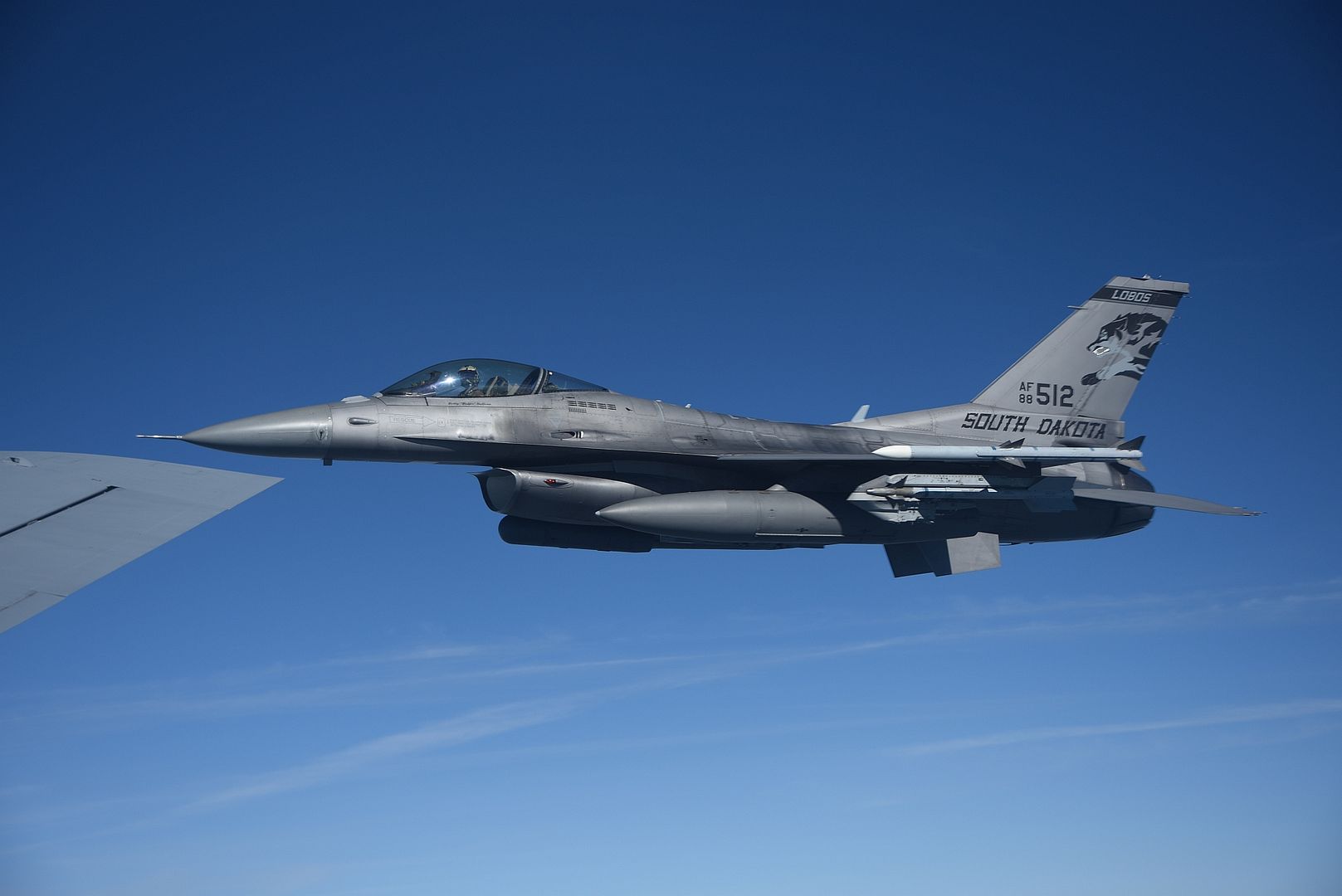
A U.S. Air Force F-16 Falcon from the South Dakota Air National Guard’s 114th Fighter Wing departs after receiving fuel from a U.S. Air Force KC-135 Stratotanker from the Iowa Air National Guard’s 185th Air Refueling Wing September 19, 2023. (U.S. Air National Guard photos by Master Sgt. Daniel Ter Haar)


CANBERRA, Australia – Sept. 20, 2023 – Northrop Grumman Corporation (NYSE: NOC) will produce an additional MQ-4C Triton multi-intelligence uncrewed aircraft for the Royal Australian Air Force (RAAF) following the Australian government’s decision to provide funding. The contract award will bring the total fleet size in Australia to four aircraft. Additionally, Northrop Grumman Australia has been selected by the Australian government to maintain the Triton fleet from two locations: RAAF Edinburgh, South Australia, and RAAF Tindal, Northern Territory.
“The addition of a fourth aircraft will enhance the resilience of the fleet and will provide superior surveillance capability to monitor and protect Australia’s maritime interests 24/7,” said Christine Zeitz, chief executive and general manager, Australia & New Zealand, Northrop Grumman. “We are committed to keeping Australia safe and this sovereign surveillance capability will not only contribute to, but also significantly enhance a wide range of missions.”
Triton will help Australia meet its security challenges by providing maritime monitoring of the vital sea lanes in the Indo-Pacific. These systems will have a vital role to play not just as sensors, but also as communication platforms that can facilitate the transfer of data across warfighting domains and various mission needs.
The Australian Tritons already under contract are progressing as planned through their production schedules. The inaugural flight of Australia’s first MQ-4C will occur later this year at Northrop Grumman’s Palmdale Aircraft Integration Center in California. This will mark a major production milestone in the delivery of the first aircraft to Australia in 2024.
Northrop Grumman Australia will establish a dynamic support environment for progressive delivery of capability systems into Australia. This includes establishment of ground stations into RAAF Edinburgh and air vehicles into RAAF Tindal. Northrop Grumman Australia is building a highly qualified and capable Australian workforce across both locations to leverage the extensive knowledge and experience of Northrop Grumman in supporting U.S. Navy Triton operations.
Australia is part of the Triton cooperative program and is contributing to shaping the requirements of the system. Together, U.S. and Australian defence forces will be able to share data collected by their respective Tritons, a critical ability in one of the world’s most strategically important regions.
Northrop Grumman is a leading global aerospace and defense technology company. Our pioneering solutions equip our customers with the capabilities they need to connect and protect the world, and push the boundaries of human exploration across the universe. Driven by a shared purpose to solve our customers’ toughest problems, our 98,000 employees define possible every day.
-
 Main AdminAn F-35B Lightning II aircraft assigned to the “Vikings” of Marine Fighter Attack Squadron (VMFA) 225 lands on the flight deck aboard USS Boxer (LHD 4), Sept. 20, 2023. Boxer is a Wasp-class amphibious assault ship currently underway in the U.S. 3rd Fleet area of operations. (U.S. Navy photo by Mass Communication Specialist 2nd Class Mikal Chapman)
Main AdminAn F-35B Lightning II aircraft assigned to the “Vikings” of Marine Fighter Attack Squadron (VMFA) 225 lands on the flight deck aboard USS Boxer (LHD 4), Sept. 20, 2023. Boxer is a Wasp-class amphibious assault ship currently underway in the U.S. 3rd Fleet area of operations. (U.S. Navy photo by Mass Communication Specialist 2nd Class Mikal Chapman)_225_lands_on_the_flight_deck_aboard_USS_Boxer_(LHD_4)_Sept._20_2023..jpg?width=1920&height=1080&fit=bounds)
A U.S. Marine Corps F/A-18 Hornet with 3rd Marine Aircraft Wing, I Marine Expeditionary Force, flies en route to Marine Corps Air Station Miramar during the Marine Air-Ground Task Force (MAGTF) demonstration of the 2023 MCAS Miramar Airshow in San Diego, Sept. 21, 2023. The MAGTF Demo displays the coordinated use of close-air support, armor, artillery and infantry forces and provides a visual representation of how the Marine Corps operates. America's Airshow 2023 is a unique and incredible opportunity to witness Marine and joint aviation capabilities, civilian performers, and the world-famous Blue-Angels; to interact first-hand with Marines, other service members, and first responders; and to see first-hand the innovative spirit of the Marine Corps through emerging technologies and forward-thinking. (U.S. Marine Corps photos by Cpl. Daniel Childs)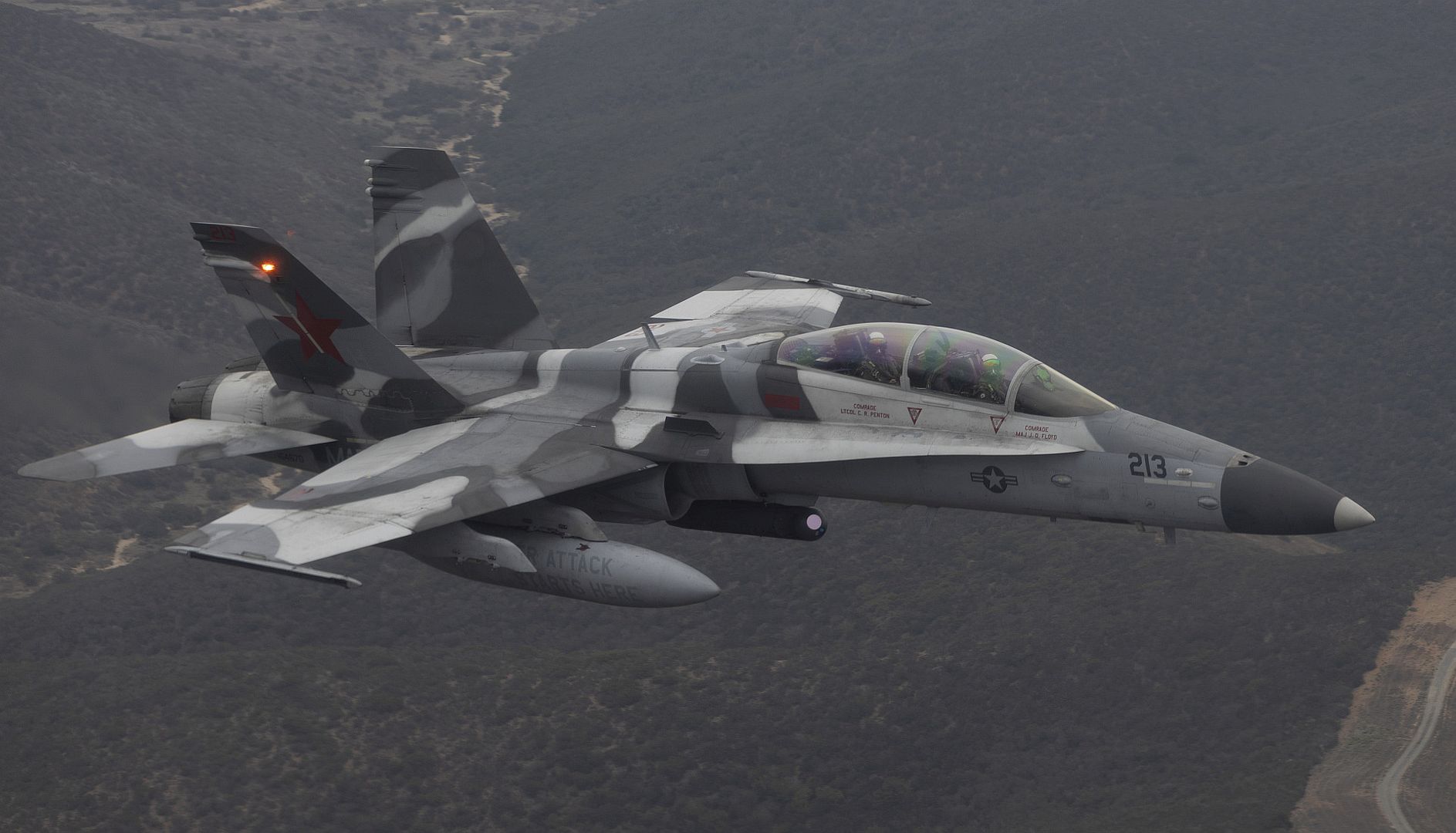
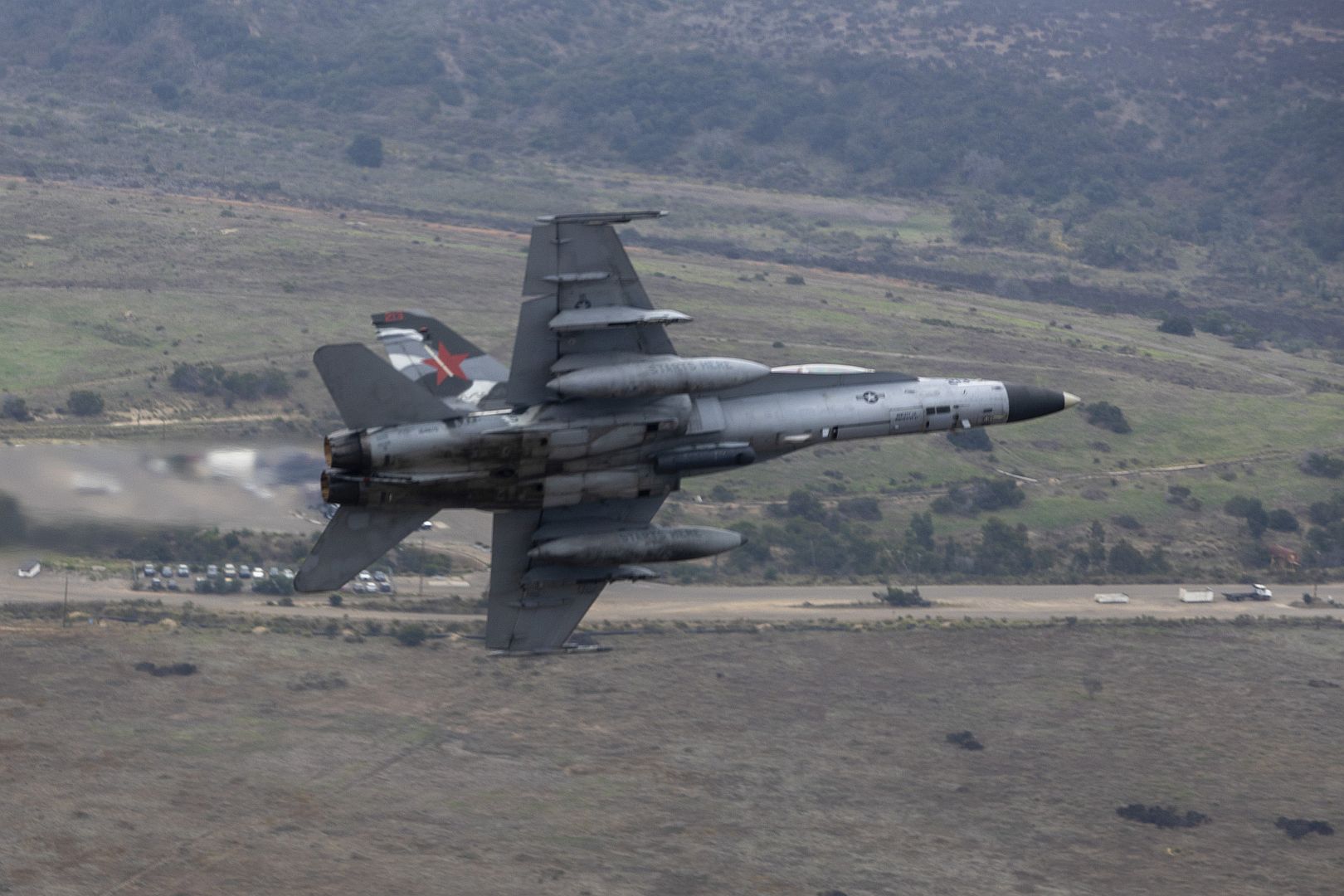
A U.S. Marine Corps F-5N Tiger II with Marine Fighter Training Squadron 401, Marine Aircraft Group 41, 4th Marine Aircraft Wing, lands during the 2023 Marine Corps Air Station Miramar Airshow in San Diego, Sept. 21, 2023. America's Airshow 2023 is a unique and incredible opportunity to witness Marine and joint aviation capabilities, civilian performers, and the world-famous Blue-Angels; to interact first-hand with Marines, other service members, and first responders; and to see first-hand the innovative spirit of the Marine Corps through emerging technologies and forward-thinking. (U.S. Marine Corps photo by Lance Cpl. Jennifer Sanchez)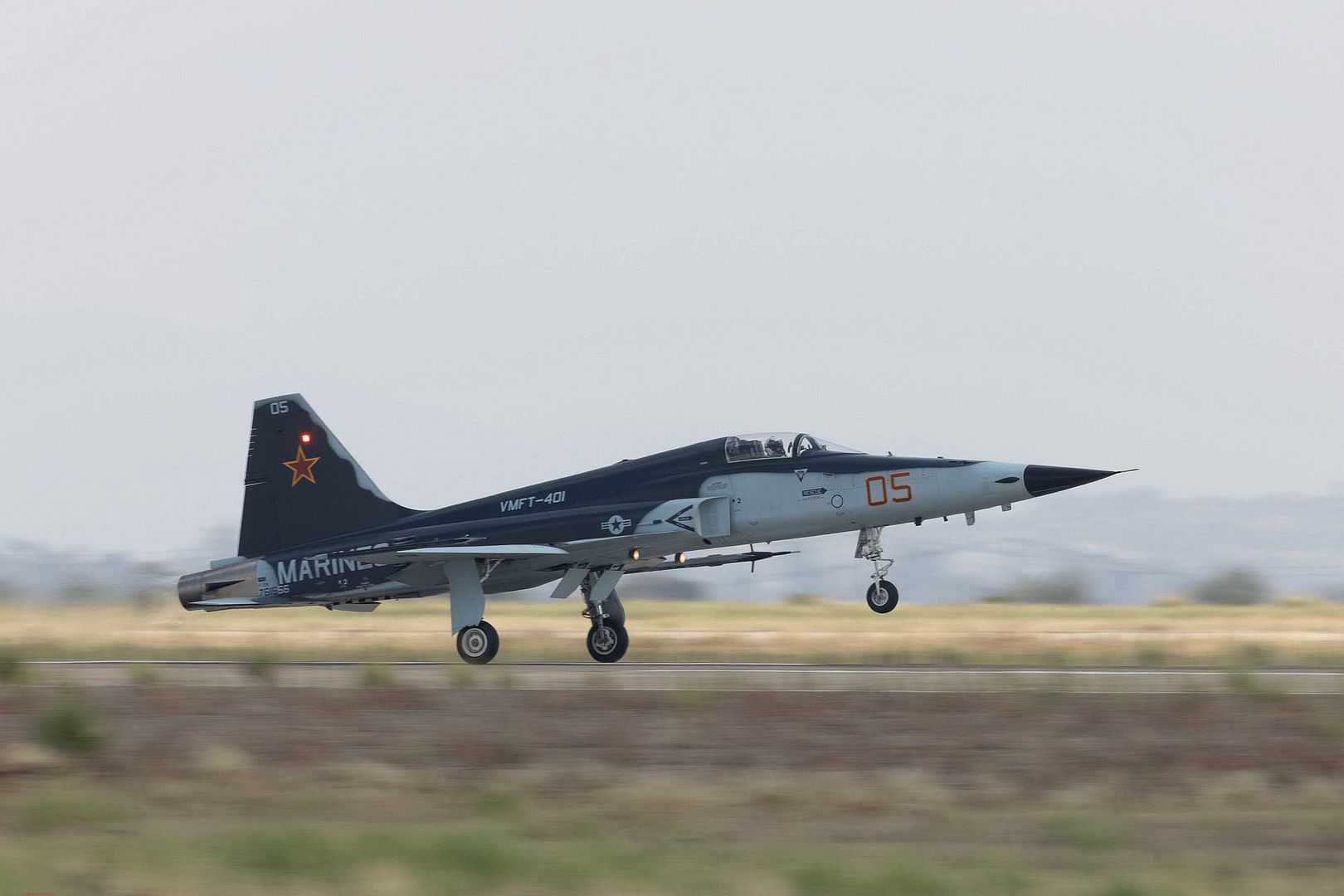
A U.S. Marine Corps CH-53E Super Stallion with 3rd Marine Aircraft Wing, I Marine Expeditionary Force, flies over for the Marine Air-Ground Task Force (MAGTF) Demonstration during the 2023 Marine Corps Air Station Miramar Airshow in San Diego, Sept. 22, 2023. The MAGTF Demo displays the coordinated use of close-air support, armor, artillery and infantry forces and provides a visual representation of how the Marine Corps operates. America's Airshow 2023 is a unique and incredible opportunity to witness Marine and joint aviation capabilities, civilian performers, and the world-famous Blue-Angels; to interact first-hand with Marines, other service members, and first responders; and to see first-hand the innovative spirit of the Marine Corps through emerging technologies and forward-thinking. (U.S. Marine Corps photo by Lance Cpl. Jackson Rush)_Demonstration_during_the_2023_Marine_Corps_Air_Station_Miramar.jpg?width=1920&height=1080&fit=bounds)
A U.S. Coast Guard HC-130J Super Hercules assigned to Air Station Kodiak, Alaska, takes off in support of Operation North Pacific Guard at Yokota Air Base, Japan, Sept. 21, 2023. Members of the USCG traveled to Japan in support of Operation North Pacific Guard, an annual international law enforcement operation in the high seas of the North Pacific with Canada’s counterparts from the United States, Korea and Japan. (U.S. Air Force photo by Yasuo Osakabe)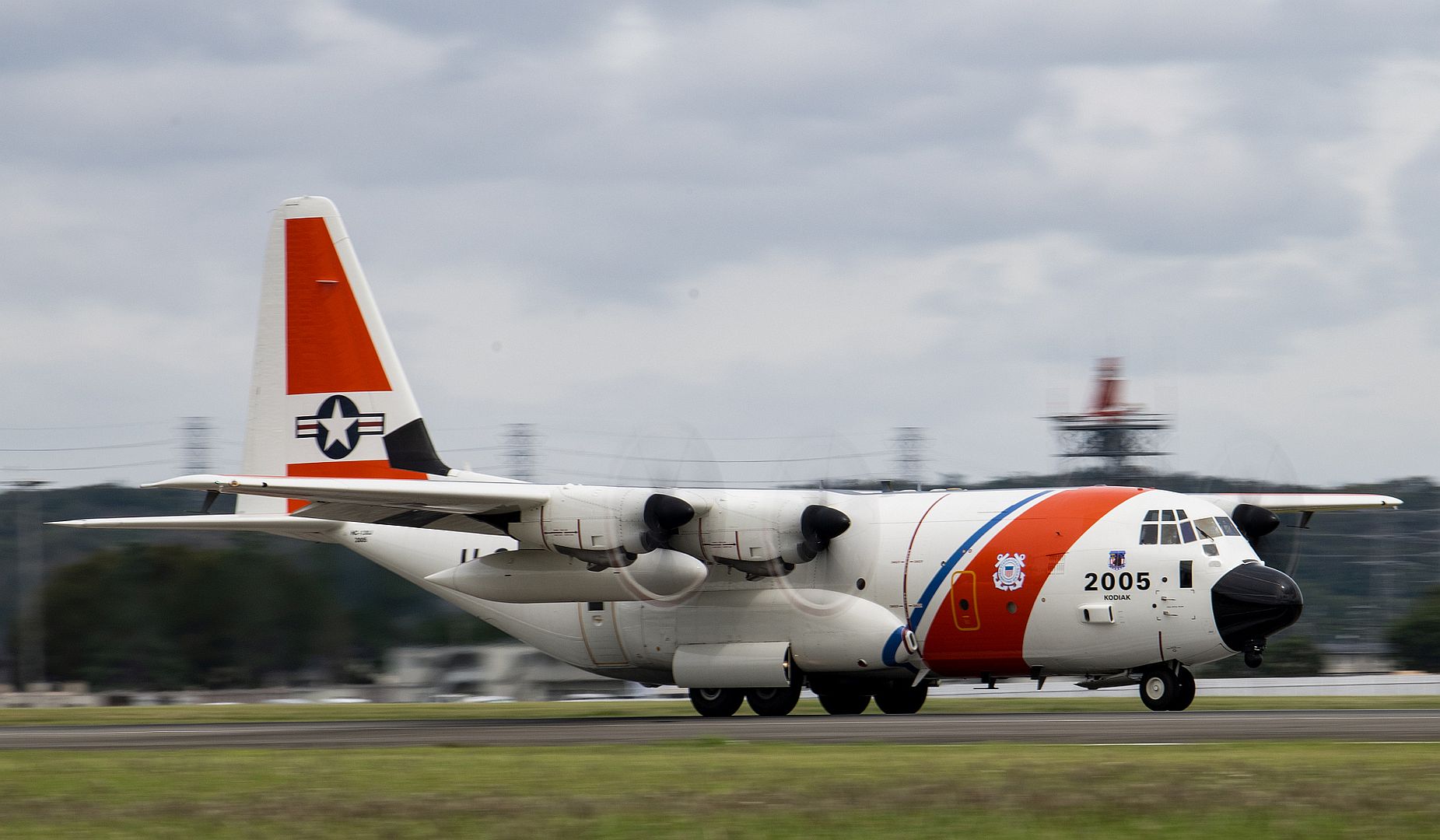
A German air force Tornado aircraft takes off at Aviano Air Base during exercise Decisive South 2, Sept. 21, 2023. DS2 is an exercise that supported various missions that bolstered readiness, enhanced collective defense posture and furthered integration of air capabilities with Allied nations (U.S. Air Force photo by Staff Sgt. Jessica Blair)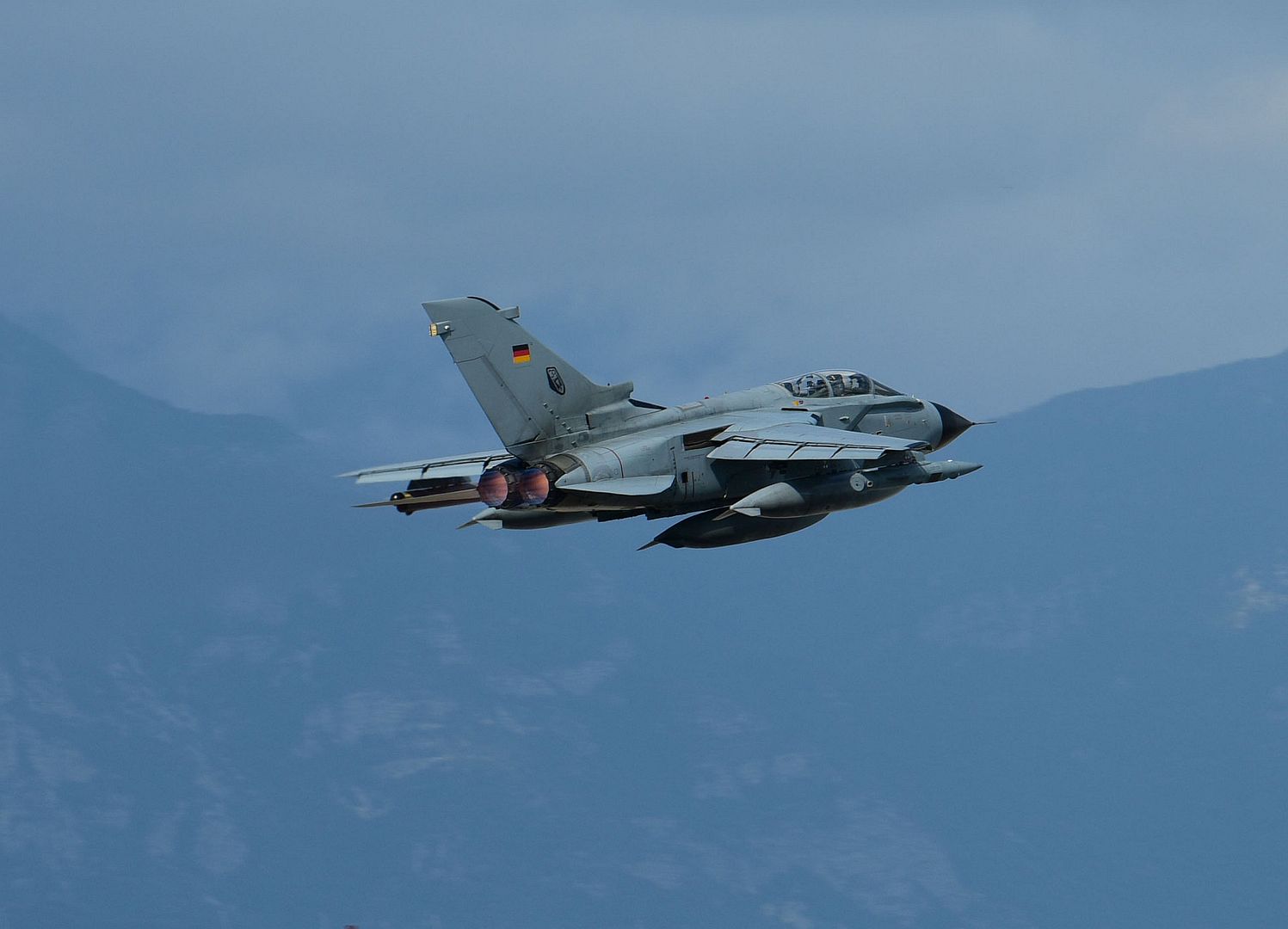
F-16 Fighting Falcons from the Royal Netherlands Air Force take off at Aviano Air Base during exercise Decisive South 2, Sept. 21, 2023. DS2 is an exercise that supported various missions that bolstered readiness, enhanced collective defense posture and furthered integration of air capabilities with Allied nations (U.S. Air Force photos by Staff Sgt. Jessica Blair)

A Spanish Air Force A400M Atlas prepares to depart from MacDill Air Force Base, Florida Sept. 21, 2023, to participate in Exercise Green Flag in Alexandria, Louisiana. Green Flag is an unscripted battle exercise to strengthen joint integration, international partnerships and ensure capabilities. (U.S. Air Force photo by Airman 1st Class Sterling Sutton)
A Spanish Air Force A400M Atlas departs the flightline at MacDill Air Force Base, Florida Sept. 21, 2023, to participate in Exercise Green Flag in Alexandria, Louisiana. Green Flag is an unscripted battle exercise to strengthen joint integration, international partnerships and ensure capabilities. (U.S. Air Force photo by Airman 1st Class Sterling Sutton)
A formation of MC-130J Commando II aircraft assigned to the 15th Special Operations fly near Hurlburt Field, Florida, Sept. 21, 2023. Crews conducted the four-ship formation flight as part of a demonstration for the 94th Joint Civilian Orientation Conference at Hurlburt Field. (U.S. Air Force photo by Senior Airman Natalie Fiorilli)
A U.S. Air Force F-16 Fighting Falcon assigned to the 480th Fighter Squadron taxis at the 86th Air Base, Romania, in support of NATOs enhanced Air Policing (eAP) capabilities, Sept. 22, 2023. European partners and U.S. forces continue to conduct engagements and multinational exercises, which enhance interoperability to improve regional cooperation, maritime security and stability in the region. (U.S. Air Force photo by Airman 1st Class Albert Morel)_capabilities_Sept._22_2023..jpg?width=1920&height=1080&fit=bounds)
-
 Main AdminA U.S. Air Force F-15E Strike Eagle assigned to the 391st Fighter Squadron, Mountain Home Air Force Base, Idaho, taxis as another F-15E assigned to the 336th Fighter Squadron, Seymour Johnson Air Force Base, North Carolina, soars over Kadena Air Base, Japan during a no-notice agile combat employment exercise, Sept. 22, 2023. Airmen practiced rapidly launching Kadena Air Base’s F-15C/D Eagles, as well as F-35As Lightning IIs and F-15E currently deployed to the base. (U.S. Air Force photo by Lt. Col. Raymond Geoffroy)
Main AdminA U.S. Air Force F-15E Strike Eagle assigned to the 391st Fighter Squadron, Mountain Home Air Force Base, Idaho, taxis as another F-15E assigned to the 336th Fighter Squadron, Seymour Johnson Air Force Base, North Carolina, soars over Kadena Air Base, Japan during a no-notice agile combat employment exercise, Sept. 22, 2023. Airmen practiced rapidly launching Kadena Air Base’s F-15C/D Eagles, as well as F-35As Lightning IIs and F-15E currently deployed to the base. (U.S. Air Force photo by Lt. Col. Raymond Geoffroy)
A U.S. Air Force F-35A Lightning II assigned to the 355th Fighter Squadron, Eielson Air Force Base, Alaska, prepares to taxi during a no-notice agile combat employment exercise at Kadena Air Base, Japan, Sept. 22, 2023. Airmen practiced rapidly launching Kadena Air Base’s F-15C/D Eagles, as well as F-35As and F-15E Strike Eagles currently deployed to the base. (U.S. Air Force photo by Lt. Col. Raymond Geoffroy)
An F/A-18F Super Hornet attached to Strike Fighter Squadron (VFA-103) flies over Nimitz-class aircraft carrier USS George Washington (CVN 73) during friends and family day in the Atlantic Ocean, Sept. 24, 2023. George Washington is pierside in Naval Station Norfolk in the stages of inspection and survey, a comprehensive evaluation of the material condition of the ship to ensure its fully prepared for sea operations. (U.S. Navy photo by Mass Communication Specialist Seaman August Clawson)_flies_over_Nimitz-class_aircraft_carrier_USS_George_Washington_(CVN_73)_during_friends_and_family_day_in_the_Atlantic_Ocean_Sept._24_2023..jpg?width=1920&height=1080&fit=bounds)
A U.S Marine Corps F-35B Lightning II with 3rd Marine Aircraft Wing, I Marine Expeditionary Force, conducts an aerial demonstration during the Marine Air-Ground Task Force (MAGTF) demonstration during the 2023 Marine Corps Air Station Miramar Airshow in San Diego, Sept. 24, 2023. The MAGTF Demo displays the coordinated use of close-air support, armor, artillery and infantry forces and provides a visual representation of how the Marine Corps operates. America's Airshow 2023 is a unique and incredible opportunity to witness Marine and joint aviation capabilities, civilian performers, and the world-famous Blue Angels; to interact first-hand with Marines, other service members, and first responders; and to see first-hand the innovative spirit of the Marine Corps through emerging technologies and forward-thinking. (U.S. Marine Corps photo by Pfc. Seferino Gamez)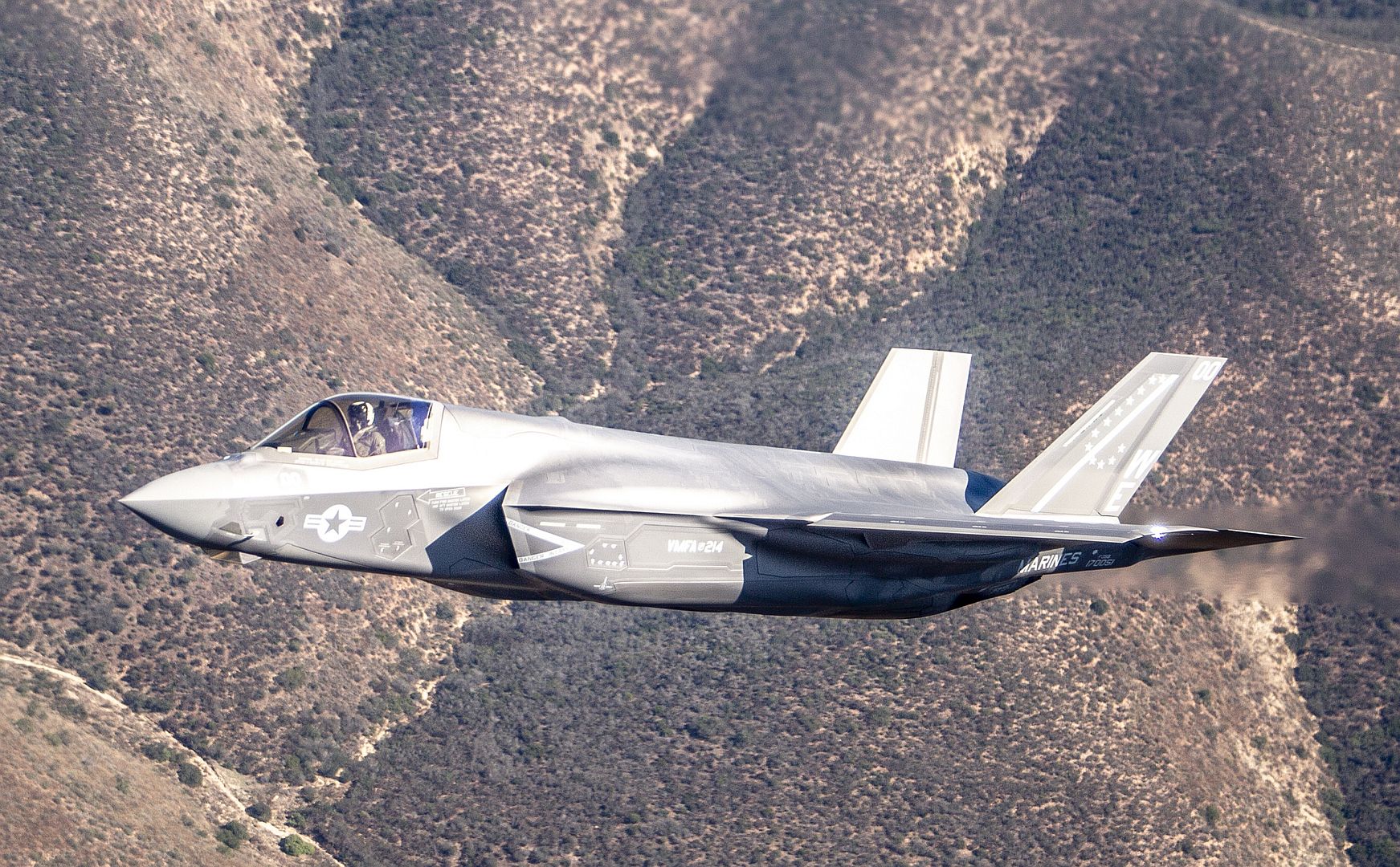
SEATTLE, Sept. 25, 2023 /PRNewswire/ -- Boeing [NYSE: BA] and Air Canada announced today the carrier is selecting the 787 Dreamliner to further modernize and grow its fleet with an order for 18 787-10 widebody jets, with the option to purchase 12 more. The flag carrier of the country, Air Canada will deploy the new fuel-efficient airplanes as part of its broader strategy to reduce carbon emissions while expanding its global route network.
"Air Canada has made investing in the passenger experience a core priority. Our experience shows customers greatly enjoy flying on the Dreamliner, so we are pleased to offer them a larger version of this popular aircraft, which will premiere a new, state-of-the-art interior cabin design. As importantly, the 787 is highly fuel efficient and will generate operational savings as well as support our sustainability goals of reducing emissions," said Michael Rousseau, president and CEO of Air Canada.
Reducing fuel use and improving efficiency by up to 25% compared to previous generation jets, the 787 helps advance Air Canada's ambitious environment goals over the next several decades. The carrier is positioned to optimize its fleet as it adds international routes in new and existing markets, further benefiting from the Dreamliner family's route flexibility and operating economics.
"With the 787 Dreamliner family, Air Canada will soon operate one of the most modern, efficient widebody fleets in the world," said Stan Deal, president and CEO of Boeing Commercial Airplanes. "The 787-10 will provide Air Canada with greater flexibility and commonality across its expansive network, connecting Canadians to destinations around the world."
Air Canada currently operates a fleet of 38 787s, including eight 787-8 and 30 787-9 jets. The largest model in the family, the 787-10, can carry up to 336 passengers with a range of 6,330 nautical miles (11,730 km).
With the selection of the 787 Dreamliner family, Air Canada is supporting economic growth and jobs across the Canadian aviation industry. Canada is among Boeing's largest international supply bases with more than 550 suppliers. There are more than a dozen Canadian suppliers supporting the 787 program, including Boeing's aerospace composite manufacturing facility in Winnipeg. Each year, Boeing contributes CAD ~$4 billion in economic benefit to Canada while supporting more than 14,000 direct and indirect jobs.
Since revenue service began in 2011, the 787 family has opened more than 370 new nonstop routes around the world and received more than 1,760 orders from 87 customers – including more than 870 repeat orders from 56 repeat customers. Over the last year, the 787 has received more than 295 orders and commitments. Nearly half of all 787 Dreamliner operators fly more than one variant and four airlines operate, or will operate, fleets with all three variants.
As a leading global aerospace company, Boeing develops, manufactures and services commercial airplanes, defense products and space systems for customers in more than 150 countries. As a top U.S. exporter, the company leverages the talents of a global supplier base to advance economic opportunity, sustainability and community impact. Boeing's diverse team is committed to innovating for the future and living the company's core values of safety, quality and integrity. Learn more at www.boeing.com.
Hamburg, During the German National Aviation Conference in Hamburg, Airbus Helicopters unveiled the PioneerLab, its new twin-engine technology demonstrator based on the H145 platform. It complements Airbus' range of FlightLabs and focuses on testing technologies that reduce helicopter emissions, increase autonomy and integrate bio-based materials.
"With PioneerLab, we continue our ambitious strategy to test and mature new technologies on board our helicopter demonstrators," said Tomasz Krysinski, Head of Research and Innovation Programmes at Airbus Helicopters. "PioneerLab, which is based in Germany at our Donauwörth site, will be our platform to test technologies specifically dedicated to twin-engine helicopters."
The PioneerLab aims to demonstrate a fuel reduction of up to 30% compared to a conventional H145, thanks to a hybrid electric propulsion system and aerodynamic
improvements. Aboard the demonstrator, Airbus Helicopters will also flight-test structural components made from bio-based and recycled materials, which aim to reduce the
environmental footprint across the entire aircraft life cycle. The company intends to produce the new parts using processes that reduce material and energy consumption and improve recyclability. Further research activities will include the integration of the latest digital technologies into the aircraft's flight control system and associated sensors to increase autonomy and safety during critical flight phases such as take-off and landing.
PioneerLab is partially co-funded by the BMWK, the Federal German Ministry for Economic Affairs and Climate Actions through its national research program LuFo. Airbus Helicopters’ FlightLabs provide agile and efficient test beds to quickly test technologies. They are part of the company's strategy to bring incremental innovation to improve its current products and as well as to mature technology for future platforms.
The PioneerLab’s flight campaign has already begun at the manufacturer's largest German site in Donauwörth, with a rotor strike alerting system being the first techno-brick tested on board the demonstrator. The next phase will be to test an automated take-off and landing system.
Visit our website to learn more about Airbus Helicopters' state-of-the-art demonstrators, Flightlab and DisruptiveLab.
24 September
RAF Typhoons land and take off from a road for first time.
Two of the RAF’s frontline jets tested and proved the capability in Finland as part of Exercise Baana. The Finnish Air Force’s annual training exercise took place on a single-lane road in Tervo, which is usually used for normal road traffic but specially designed as an emergency landing strip to sustain aircraft activity if required.
The RAF is focussing on ways to conduct Agile Combat Employment to outmanoeuvre an adversary – to survive an attack, disperse to remote locations and continue operating with minimal support.
The Officer Commanding of 41 Test and Evaluation Squadron was one of the two pilots to take part. He said:
“This is an opportunity to work with one of our newest NATO partners on an exercise in Agile Combat Employment. The Finnish have worked hard for decades on disparate operations should they be attacked and need to disperse their aircraft.
“Once we landed on the strip we stopped to refuel before taking off again, I couldn’t help but look around and think ‘I am sitting in a jet on a road in the middle of a forest in Finland’. That was pretty crazy and definitely a first.”
Officer Commanding 41 Test and Evaluation Squadron
A small number of RAF personnel were on the ground to refuel and maintain the aircraft to ensure they could continue operating.
The second pilot, Jim said:
“This is a great step forward for RAF Typhoon capability. We often talk about capability being the stuff that we fly with such as weapons and sensors.
“What is great about this is it a novel way of employing the jet, improving our survivability against modern threats and operating from dispersed locations, and also doing that while working closely with our allies who are absolutely critical to future operations.”
The RAF used to operate from unusual locations such as roads and fields during the Cold War, in order to make our aircraft harder for the enemy to find, Russian aggression in Eastern Europe has reminded us all of the need to be able to disperse our aircraft and be more unpredictable, so why we are completing exercises such as this.
This is the first time the RAF has taken part in the exercise, which is now part of the Finnish Air Force’s routine flying training. The Norwegian Air Force, also taking part for the first time, tested their F-35A Lightning aircraft, a 5th generation fighter jet also operated by the UK and 15 other allied countries.
The RAF Typhoons were operating out of Rissala Air Base and Tervo Road Base for these trials. It provides the opportunity to expand the combat air knowledge and practices of using Emergency Landing Strips and dispersed operations.
The UK and Finland enjoy a close defence relationship as NATO and Joint Expeditionary Force allies, and often train and deploy together on exercises around the world. Finnish troops also work side-by-side with the British Armed Forces to train Ukrainian recruits in the UK.
(Courtesy photos)
-
 Main AdminEDWARDS AIR FORCE BASE, Calif. (AFNS) --
Main AdminEDWARDS AIR FORCE BASE, Calif. (AFNS) --
Joby Aviation, Inc. officially delivered its first experimental electric vertical take-off and landing aircraft to the Air Force during a ceremony held at Edwards Air Force Base, Sept. 25. The ceremony showcased the unique multi-party collaboration between private industry, AFWERX, the 412th Test Wing and NASA’s Armstrong Flight Research Center.
The Emerging Technologies Integrated Test Force, part of the recently structured Airpower Foundations Combined Test Force, is the lead element tasked with testing and evaluating the technology for future national defense applications. The ET-ITF will work alongside a team from Joby Aviation as part of a unique collaboration between private industry and the Air Force.
“This partnership between AFWERX, Agility Prime and the ITF is a new, direct, agile path to progress technology through the Acquisition Valley of Death,” said Maj. Phillip Woodhull, ET-ITF director.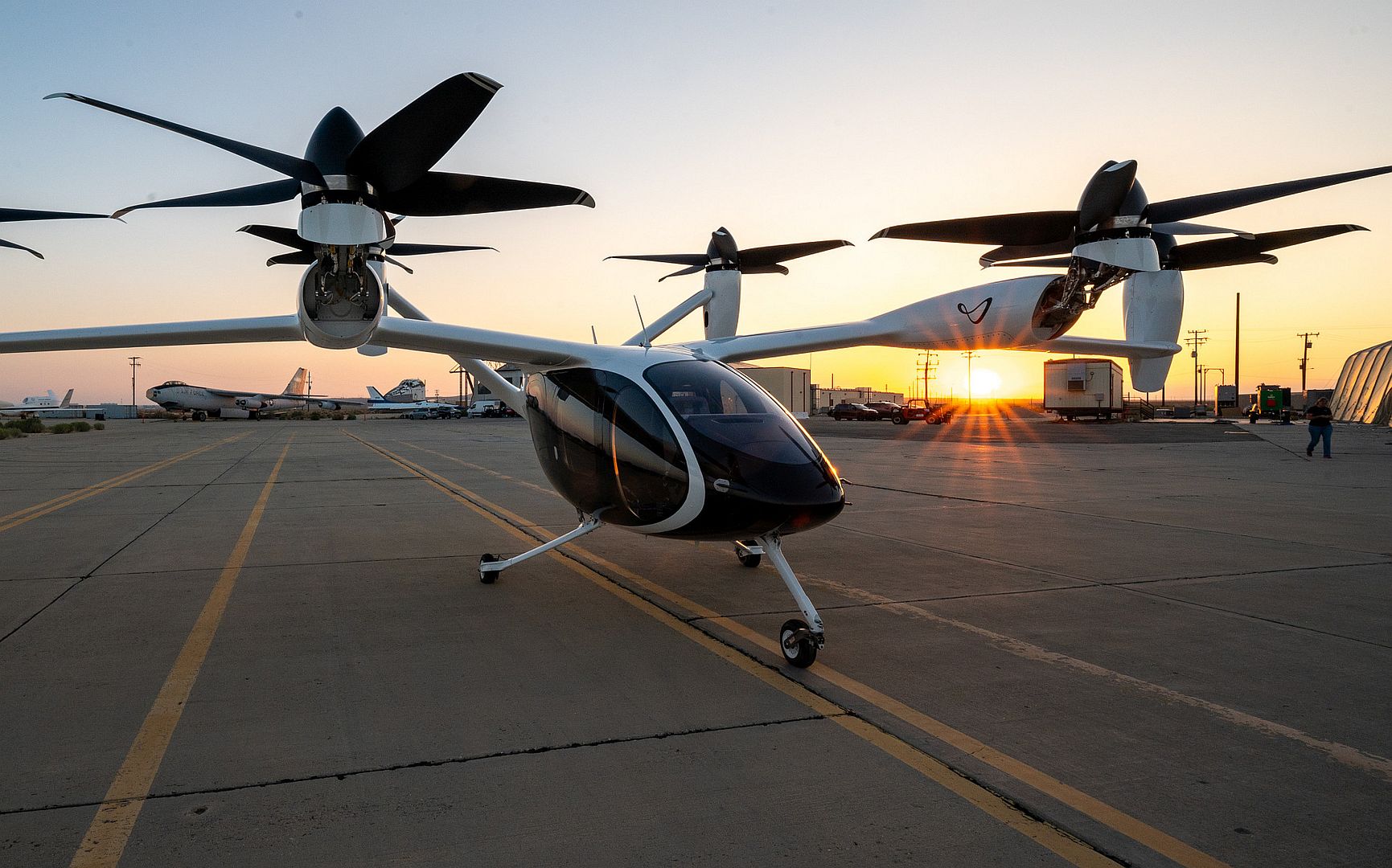
The test campaign is part of a larger program known as Agility Prime, an AFWERX led initiative that seeks to harness commercial offerings with military applications through investment in emerging technologies such as transformative vertical lift, distributed electric propulsion, electric, hybrid-electric, hydrogen, and other novel power generation sources, increased autonomy, advanced manufacturing, and agile combat employment support.
Edwards AFB presents an ideal location to conduct developmental flight testing of experimental aircraft due to an abundance of space and consistent ideal weather conditions. The ET ITF will utilize the 412th Test Wing’s world-renowned risk management process to ensure both manned and remotely piloted operations of the eVTOL aircraft are conducted safely.
Ahead of the first delivery, ET-ITF test pilots spent time with the eVTOL aircraft and systems at Joby’s Marina, California facility. This has allowed for a swift transition into developmental flight test operations at Edwards AFB. Test sorties are anticipated to begin eminently.
“As we forge forward and embrace the future of advanced air mobility, our legacy is a testament to the enduring spirit of exploration,” said Col. Douglas Wickert, 412th Test Wing commander. “Through the work of this test team, the electric dreams of today are going to become the aviation realities of tomorrow.”
( Photos by Harlan Huntington )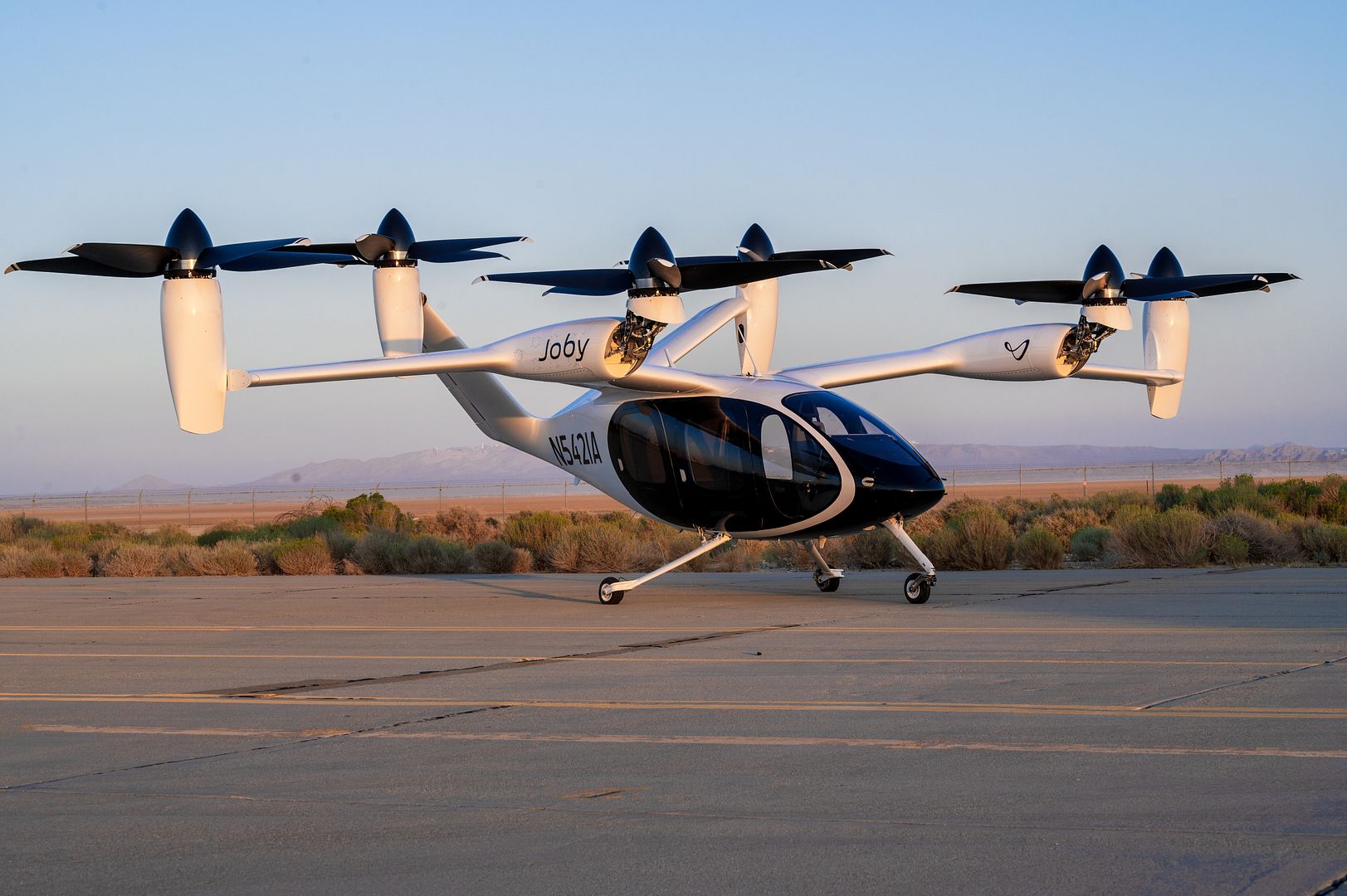
A U.S. Marine Corps F/A-18D with Marine Fighter Attack Squadron (VMFA) 232 arrives at Marine Corps Air Station (MCAS) Iwakuni, Japan, Sept. 24, 2023. Marines with VMFA-232, based out of MCAS Miramar, California, take part in a rotational unit deployment program to supplement Marine Aircraft Group (MAG) 12. The deployment enables MAG-12 to maintain its obligation to the Treaty of Mutual Cooperation and Security between Japan and the U.S. (U.S. Marine Corps photo by Sgt. Bryant Rodriguez)_232_arrives_at_Marine_Corps_Air_Station_(MCAS)_Iwakuni_Japan_Sept._24_2023..jpg?width=1920&height=1080&fit=bounds)
U.S. Air Force F-16 Fighting Falcons from the 51st Fighter Wing, Osan Air Base, South Korea, taxi at Royal Malaysian Air Force P.U. Butterworth, Malaysia, in support of Cope Taufan 23, Sept. 24, 2023. Cope Taufan 23 promotes regional stability through improved mutual understanding and partner relationship building. (U.S. Air Force photos by 1st Lt. Samantha Perez)

NAVAL STATION ROTA, Spain (Sept. 25, 2023) Airmen assigned to 727 Special Operations Aircraft Maintenance Squadron transport a CV-22 Osprey tiltrotor aircraft from the Roll on / Roll off (Ro-Ro) Container Carrier MV Liberty Power to the pier at Naval Station (NAVSTA) Rota in preparation for an intermodal transfer to the NAVSTA Rota flight line Sept. 25, 2023. Intermodal operations combine sea and air transportation to reduce cargo handling, improve security, minimize damage and allow quicker transportation. NAVSTA Rota is a force multiplier, capable of promptly deploying and supporting combat-ready forces through land, air and sea, enabling warfighters and their families, sustaining the fleet and fostering the U.S. and Spanish partnership. (U.S. Navy photos by Chief Mass Communication Specialist Nathan Carpenter)_Container_Carrier_MV_Liberty_Power_to_the_NAVSTA_Rota_flight_line_Sept._25_20231..jpg?width=1920&height=1080&fit=bounds)
_Container_Carrier_MV_Liberty_Power_to_the_NAVSTA_Rota_flight_line_Sept._25_2023..jpg?width=1920&height=1080&fit=bounds)
26 Sep 2023
BAE Systems has received a five-year contract from Lockheed Martin to sustain the AN/ALR-94 advanced digital electronic warfare (EW) system for the F-22 Raptor. Under the contract, BAE Systems will continue to manage EW system repairs and upgrades, supplier logistics, test equipment maintenance, and provide depot-level spares and engineering support to maintain F-22 EW readiness and relevancy for today’s air dominance mission.
As the original manufacturer of the complex AN/ALR-94 EW system, BAE Systems has provided life cycle management of the system since the program’s inception. In collaboration with Lockheed Martin and the U.S. Air Force, BAE Systems delivers innovative, cost-effective EW mission system support, enabling the F-22 warfighter to execute critical missions in contested airspace.
“At BAE Systems, we are committed to delivering mission-critical capability to the warfighter when they need it most,” said Dan Harrington, director of F-22 Programs at BAE Systems. “We’re investing in sustainment excellence to keep Raptors and other platforms ready to engage modern threats and outpace our adversaries.”
BAE Systems’ proactive sustainment practices have consistently delivered high readiness rates and reduced life cycle costs. Recent investments in a new state-of-the-art F-22 repair facility in Merrimack, New Hampshire demonstrate the company’s commitment to agile, cost-effective sustainment support.
The F-22 Raptor projects fifth-generation air dominance with a unique combination of long-range situational awareness, low observability, speed, agility, and lethality. The high-performance AN/ALR-94 system protects the Raptor with integrated radar warning, targeting support, and countermeasures – providing enhanced situational awareness and self-protection. The system helps pilots identify, monitor, analyze, and rapidly respond to potential threats, and enables mission success in signal-dense and contested environments.
BAE Systems is a world leader in electronic warfare, with more than 60 years of EW experience and more than 12,000 fielded tactical EW systems. Its skilled workforce has deep mission and product knowledge and its advanced technology dominates electromagnetic spectrum warfare.
(U.S. Air Force photo by Staff Sgt. Vernon Young Jr./Released)
Post a reply
- Go to Previous topic
- Go to Next topic
- Go to Welcome
- Go to Introduce Yourself
- Go to General Discussion
- Go to Screenshots, Images and Videos
- Go to Off topic
- Go to Works in Progress
- Go to Skinning Tips / Tutorials
- Go to Skin Requests
- Go to IJAAF Library
- Go to Luftwaffe Library
- Go to RAF Library
- Go to USAAF / USN Library
- Go to Misc Library
- Go to The Ops Room
- Go to Made in Germany
- Go to Campaigns and Missions
- Go to Works in Progress
- Go to Juri's Air-Raid Shelter
- Go to Campaigns and Missions
- Go to Works in Progress
- Go to Skinpacks
- Go to External Projects Discussion
- Go to Books & Resources
